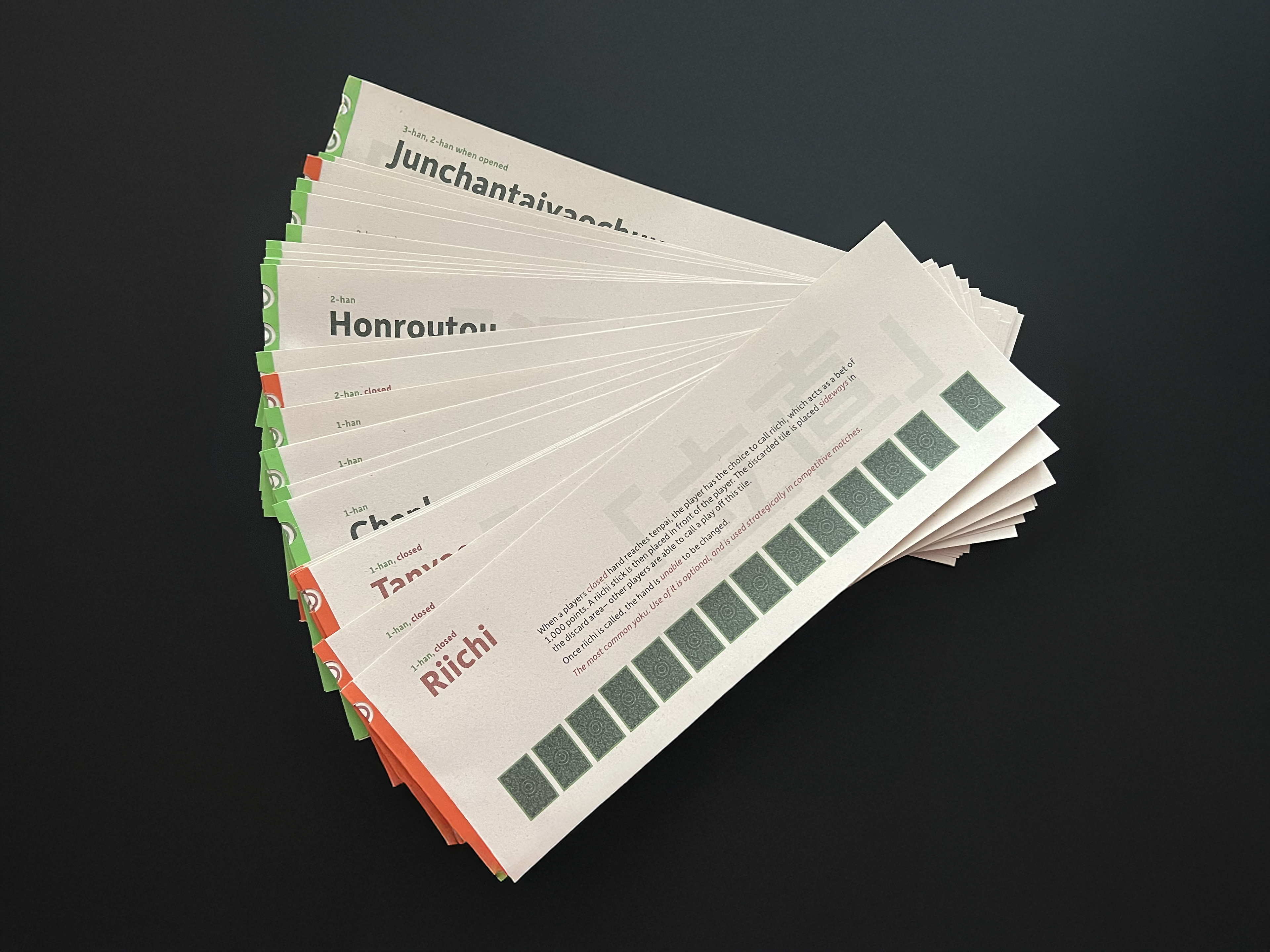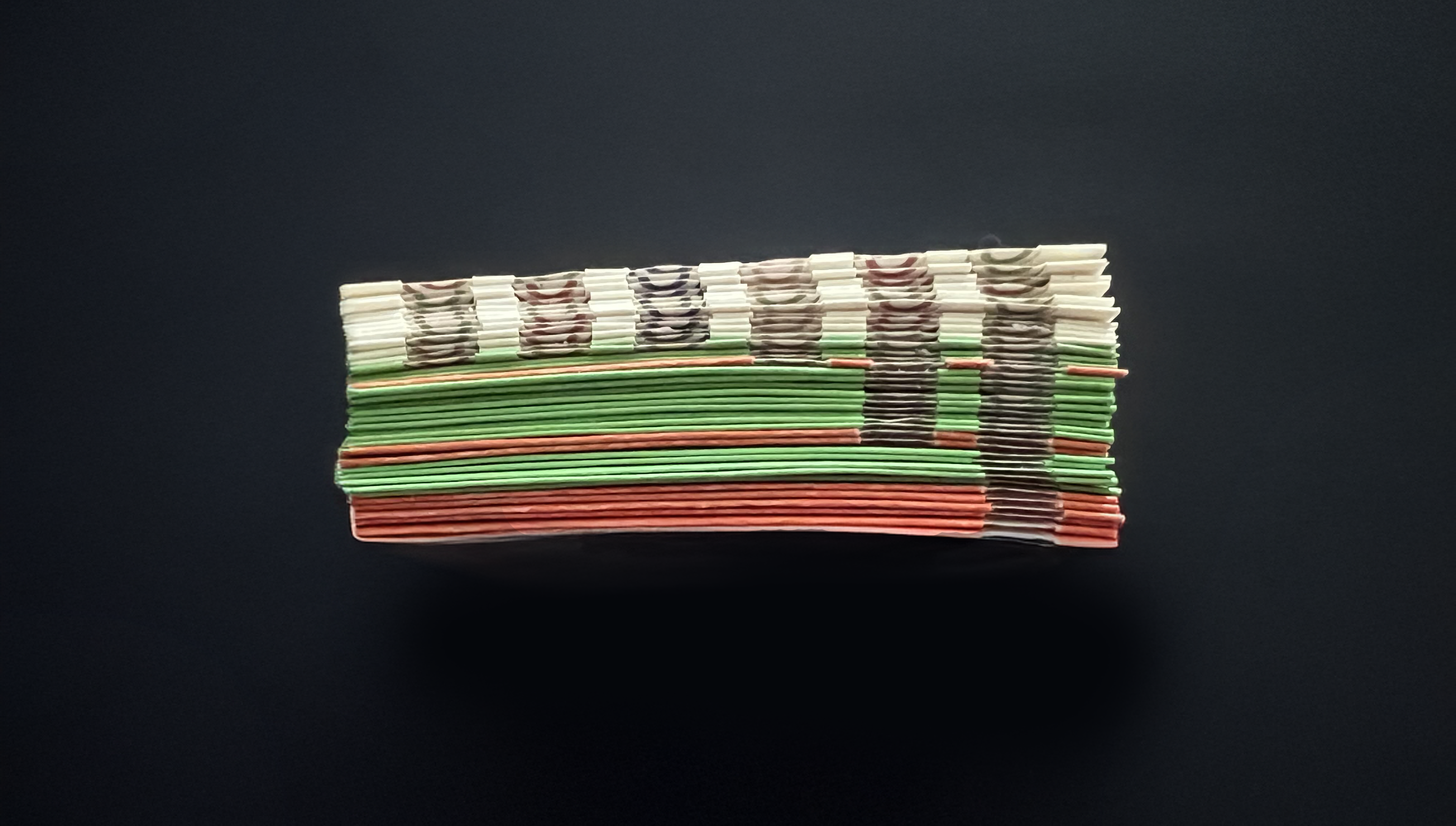Each asset is hand drawn, including individual tiles, arrows, and brackets.
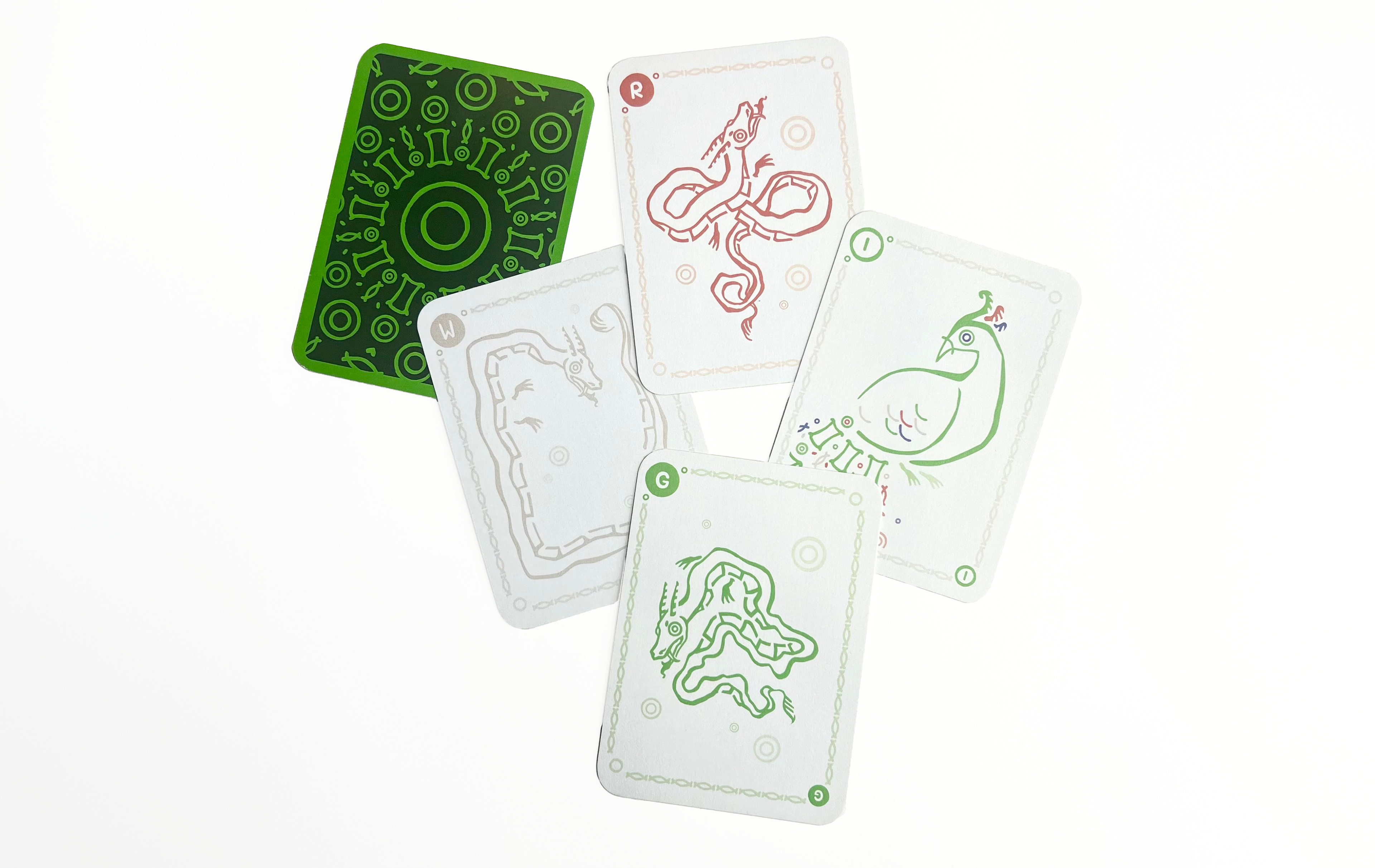
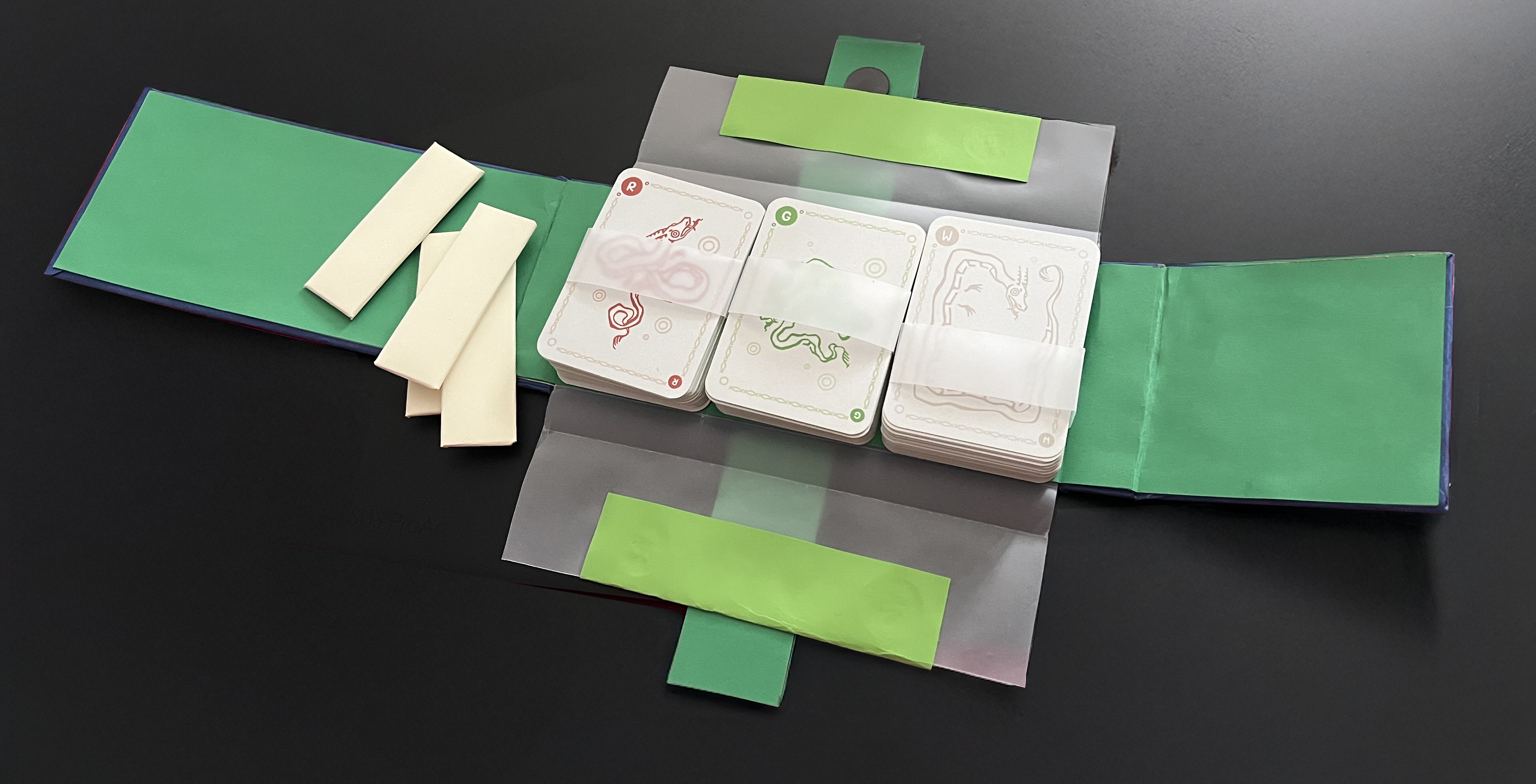

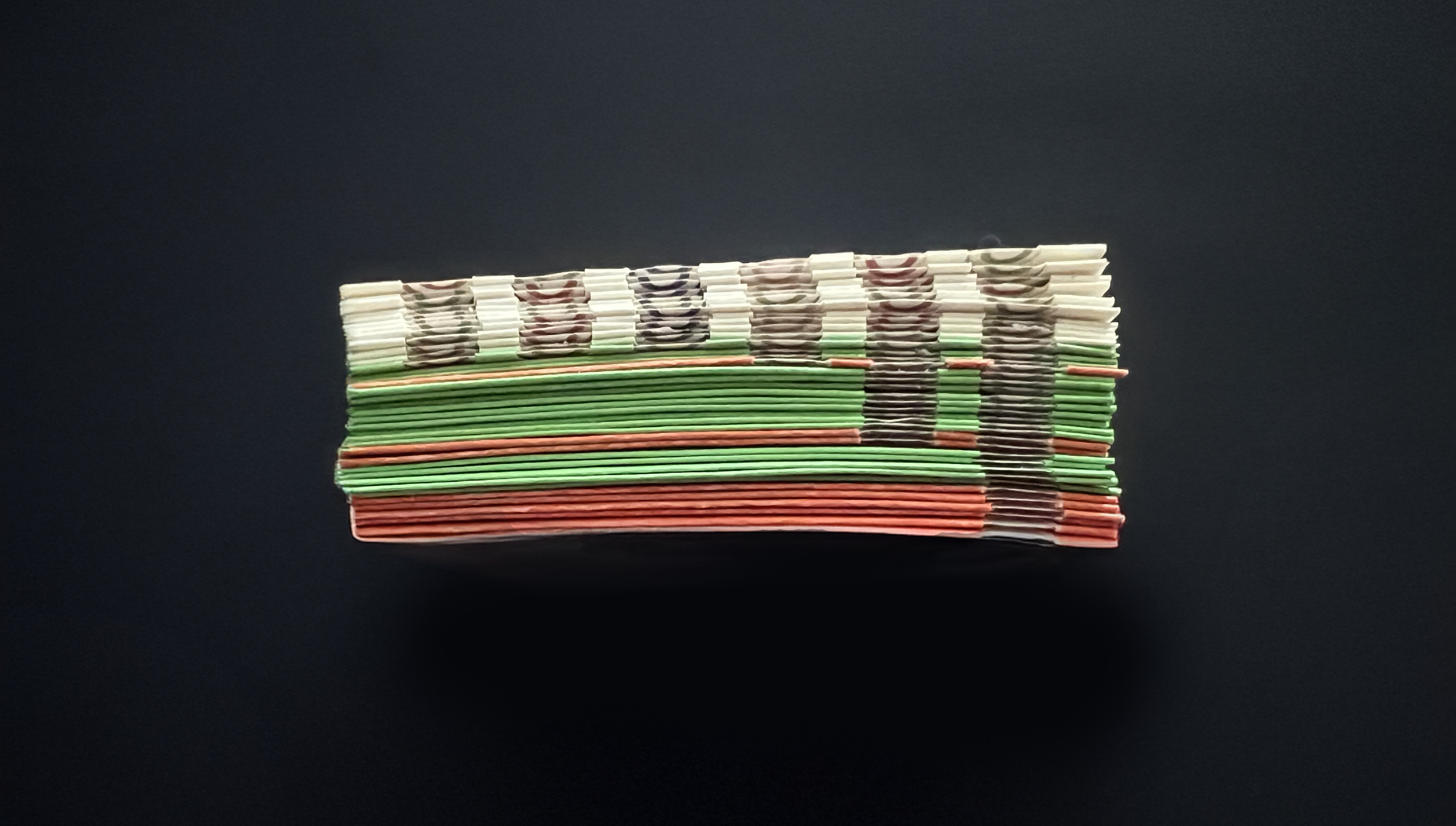
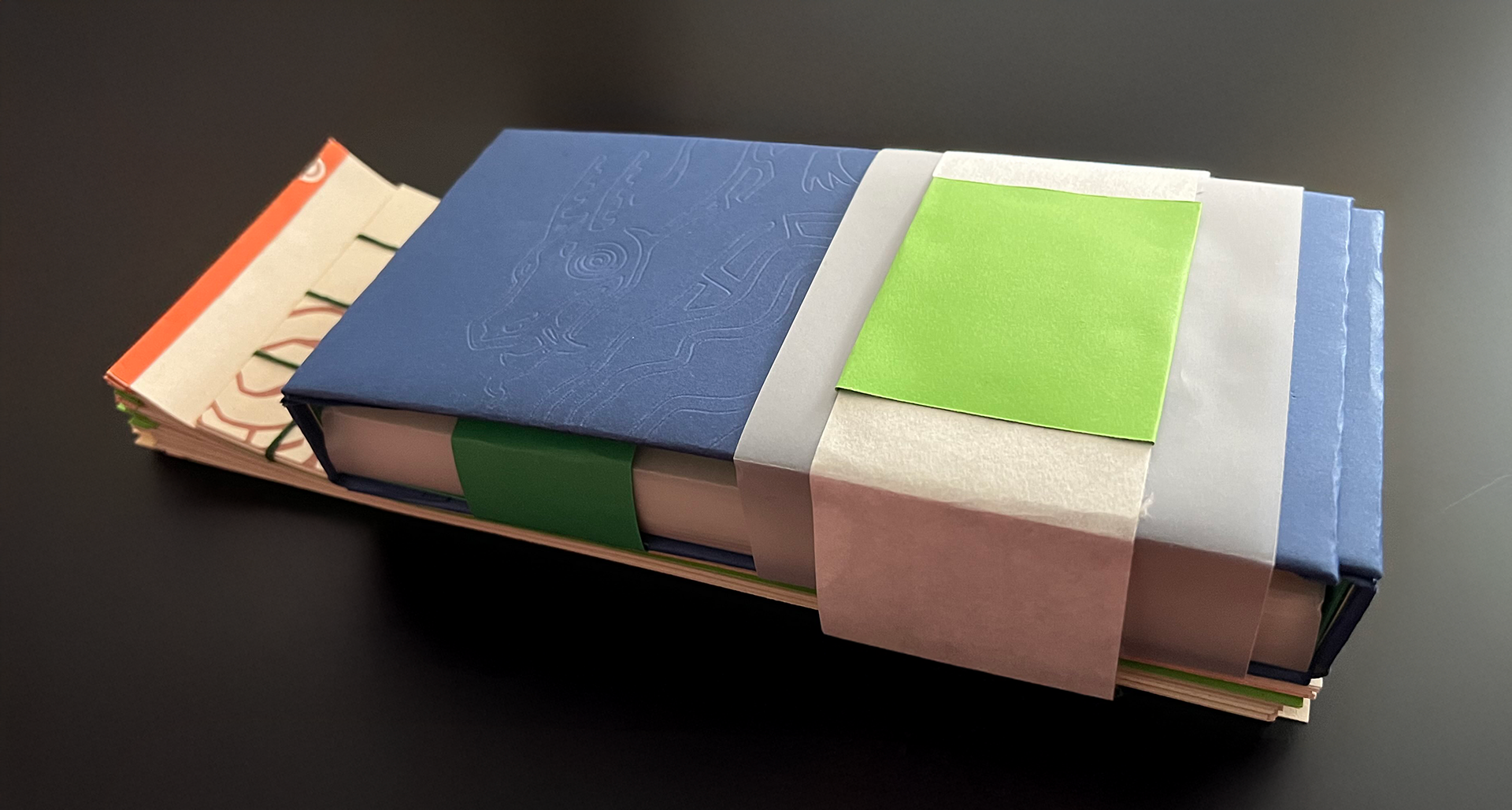
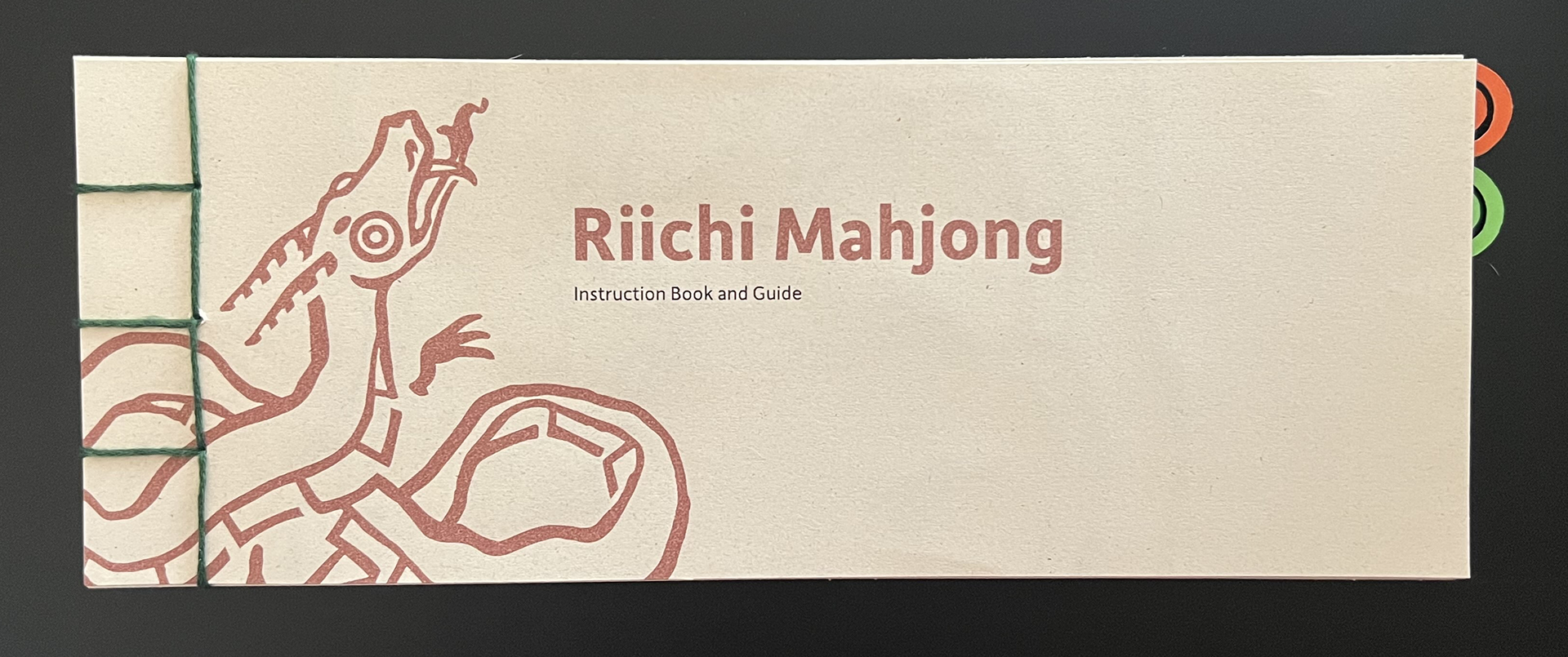

The Tiles
Each tile was meticulously designed. The stars of the show lie in the dragon tile family. Below are iterations of the three.
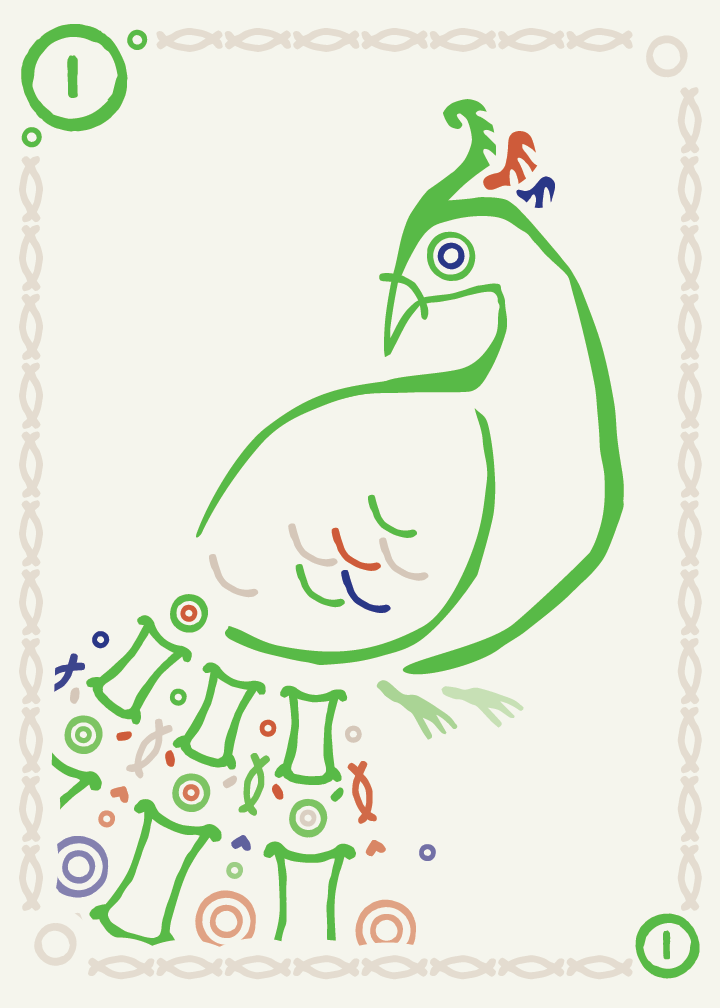


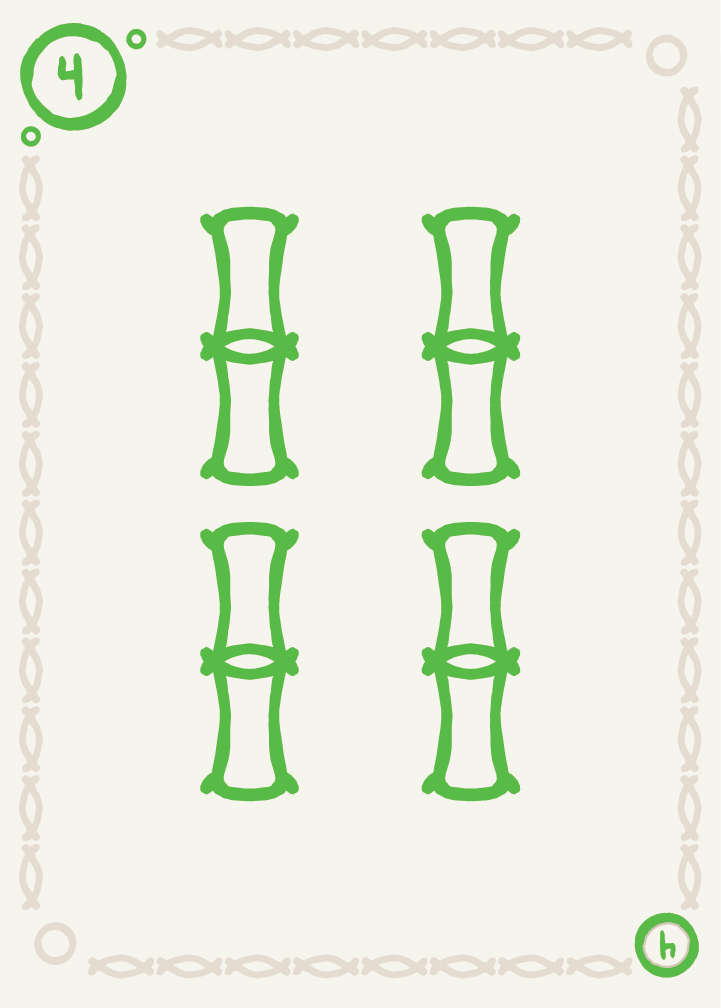
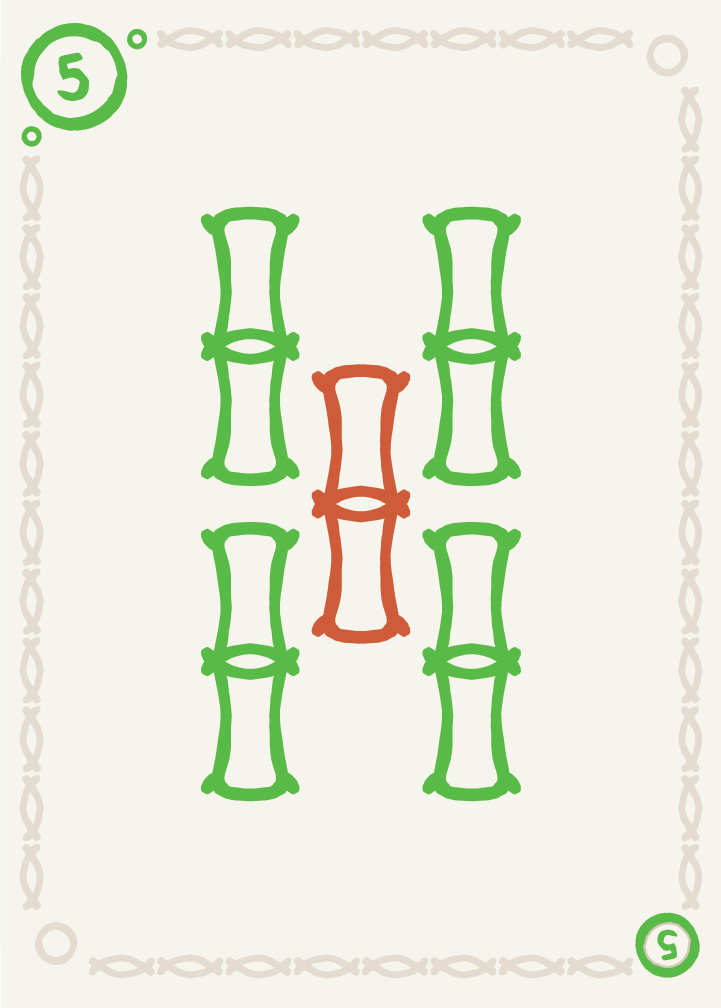
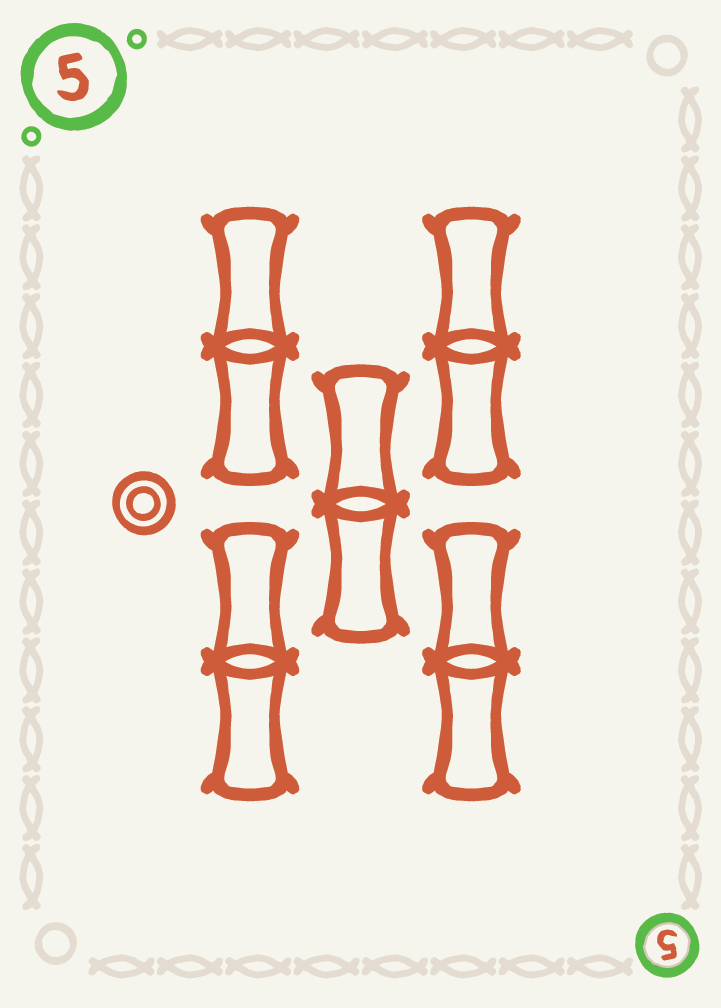

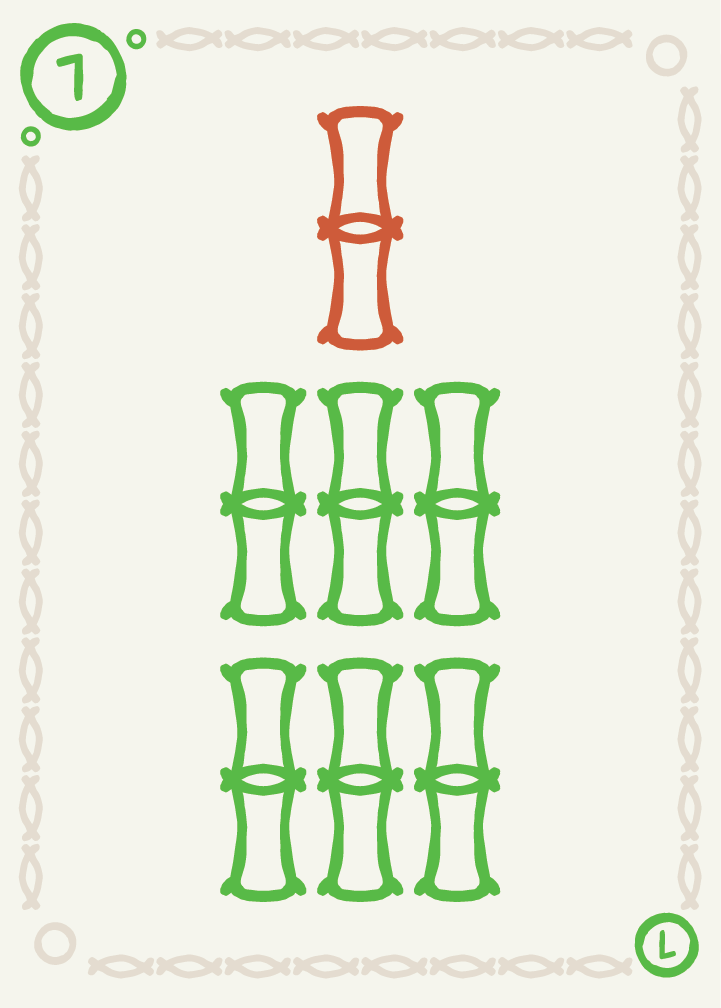

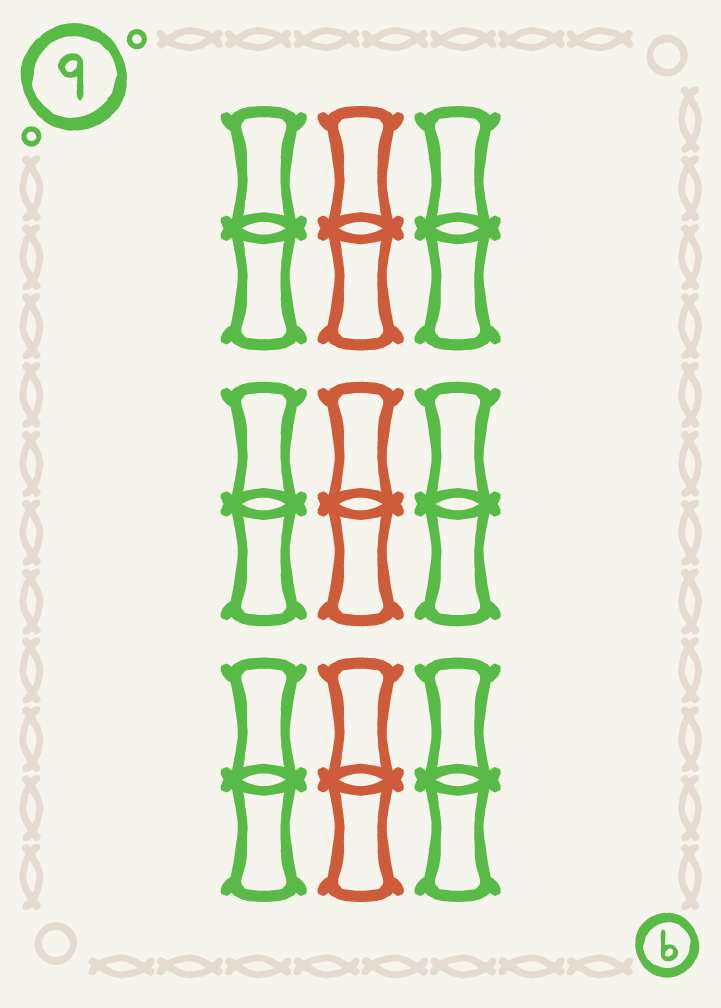
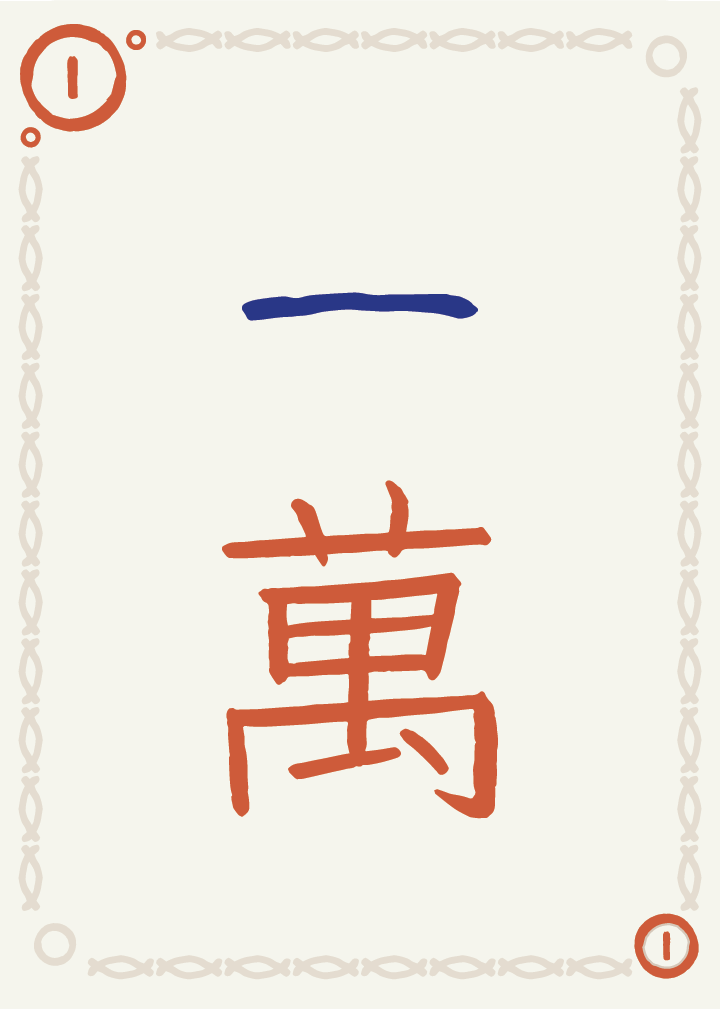
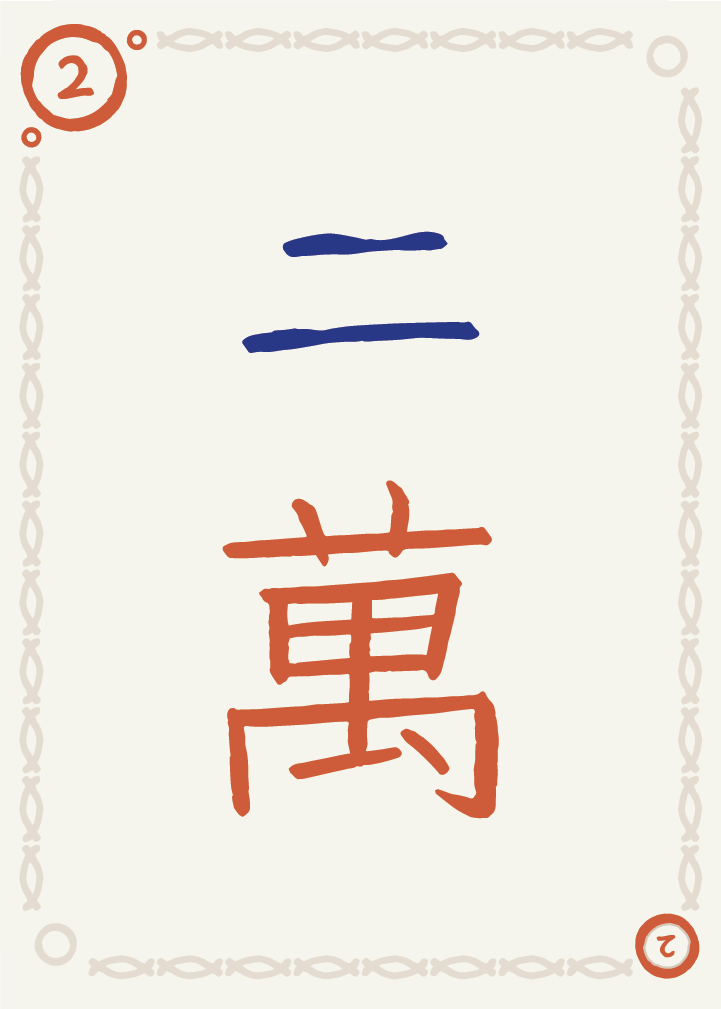

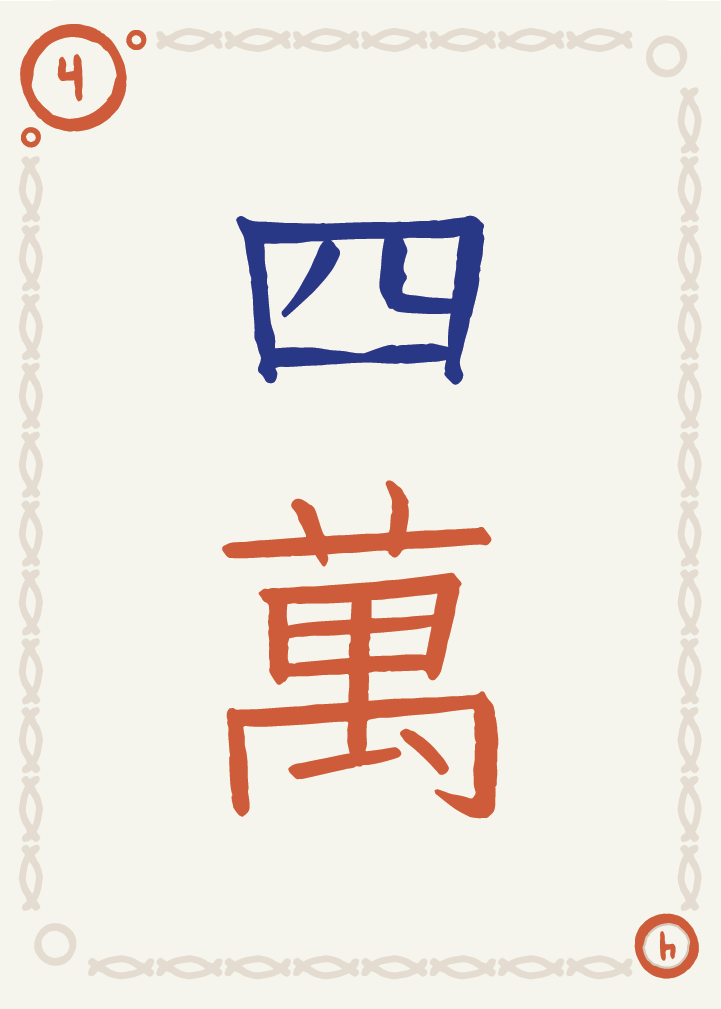
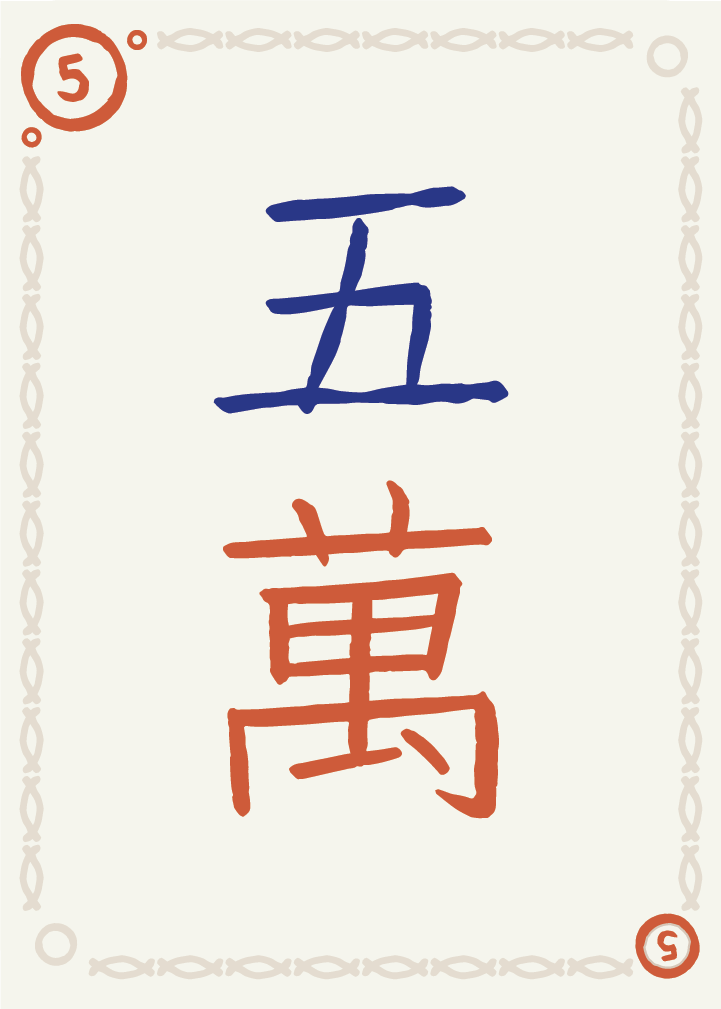
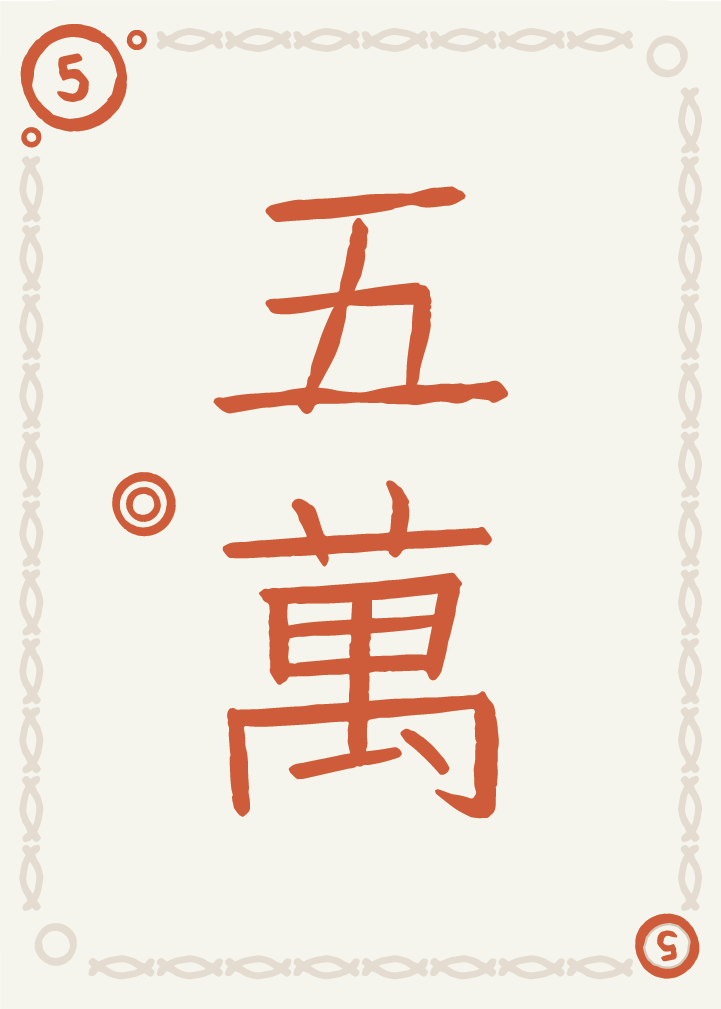
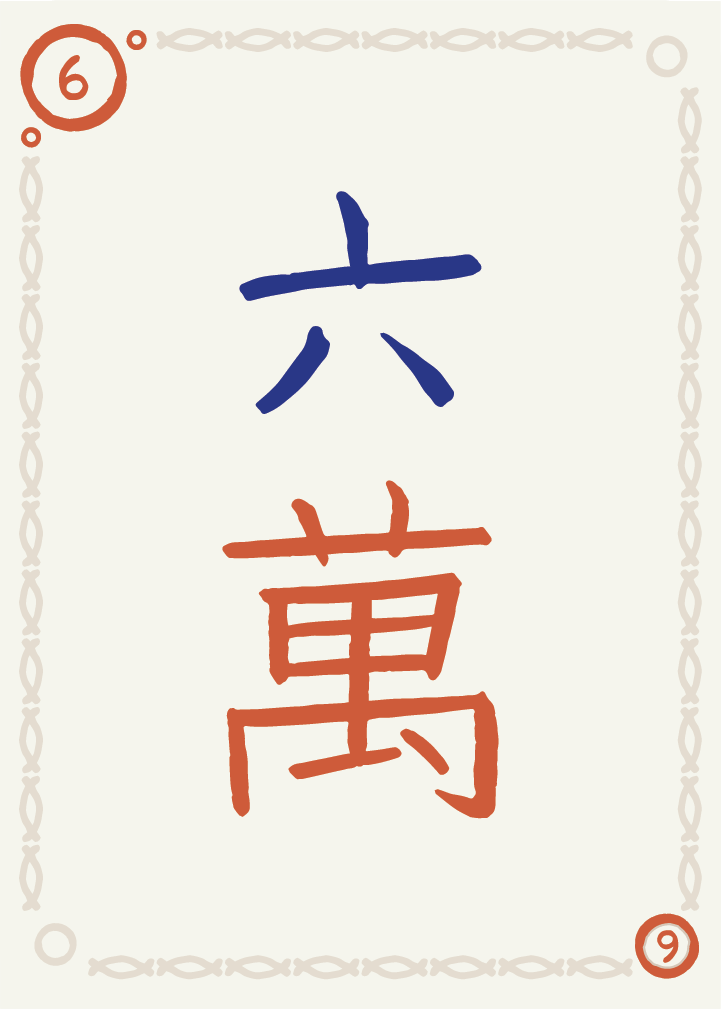

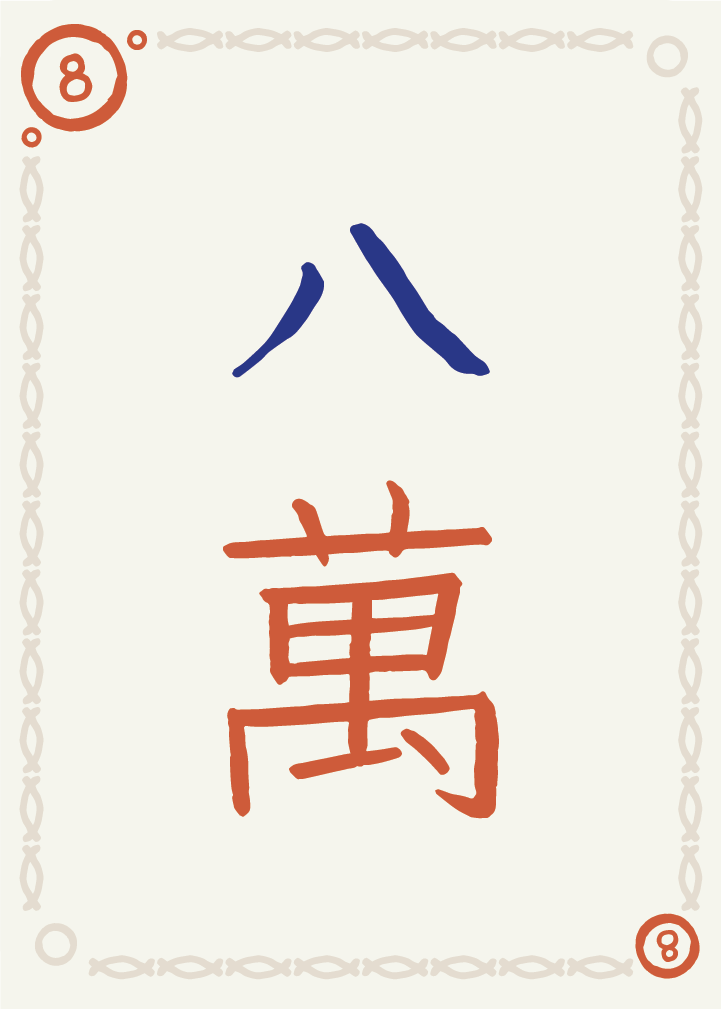

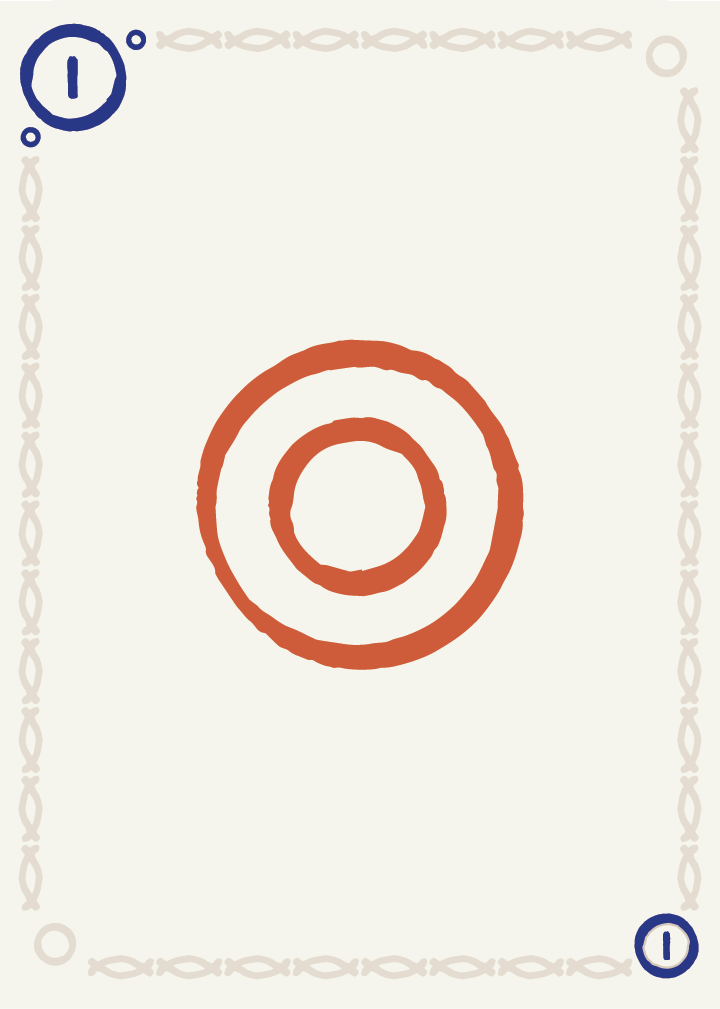
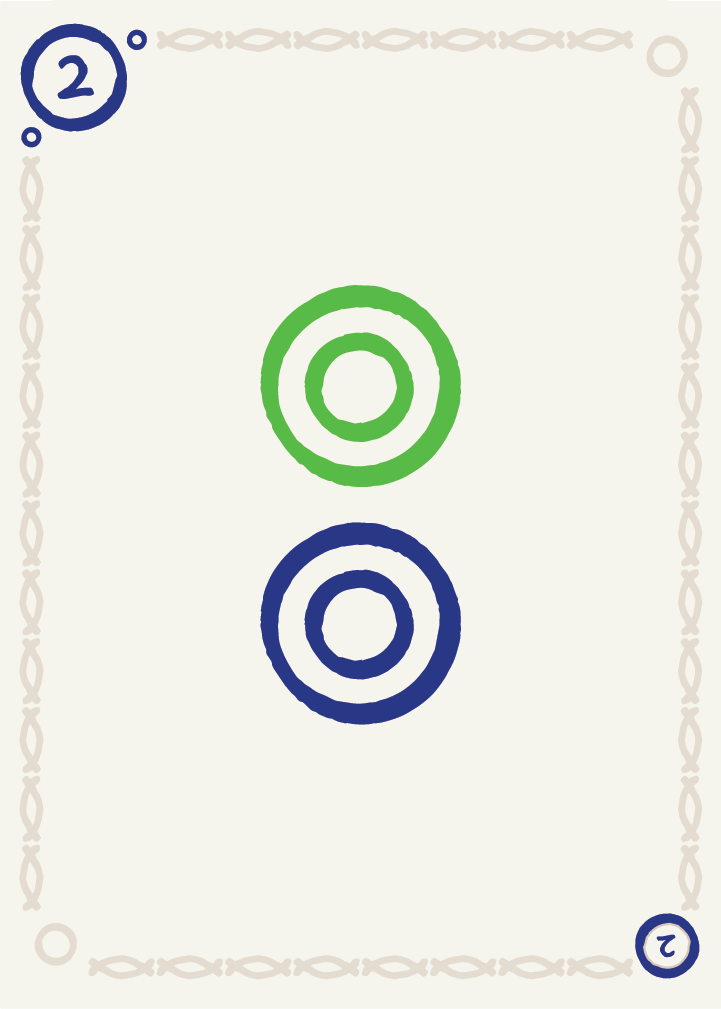
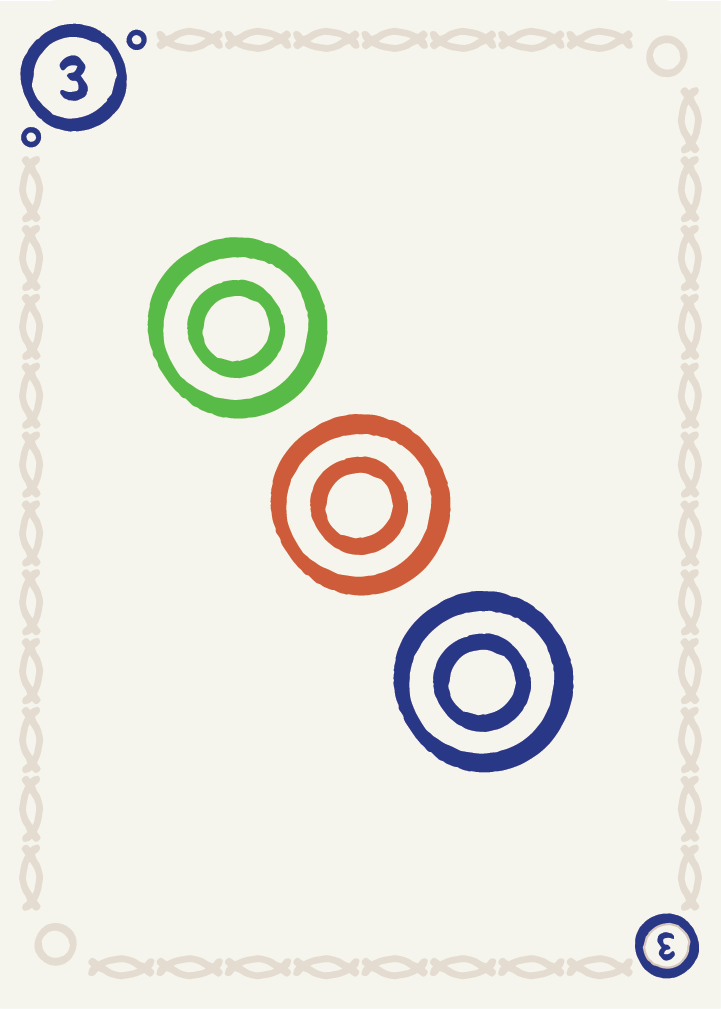
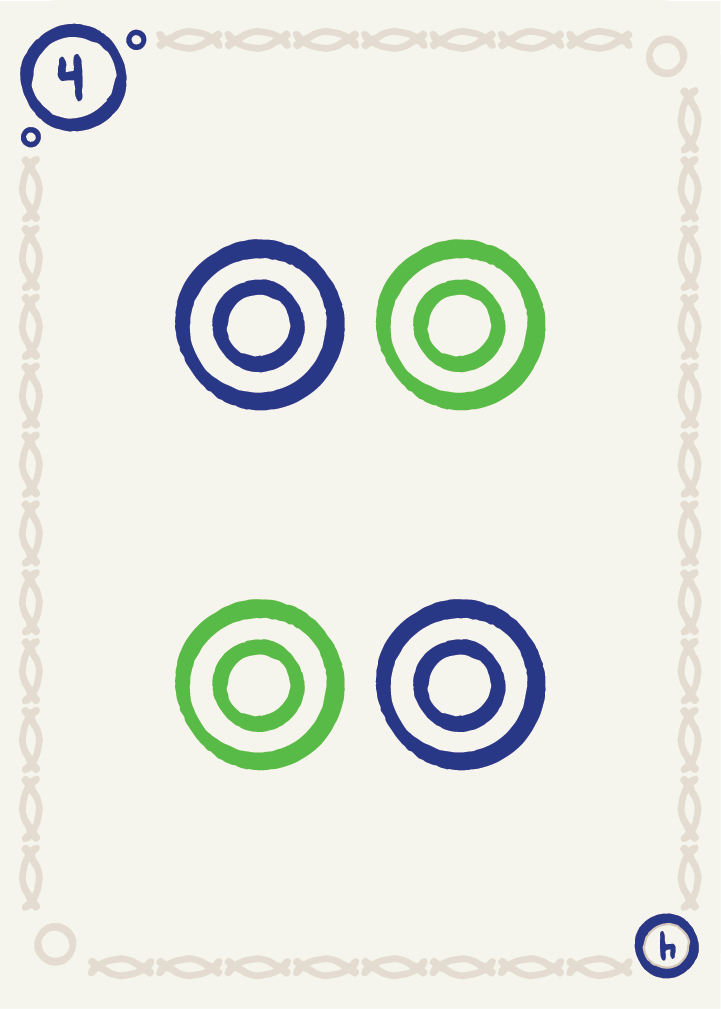
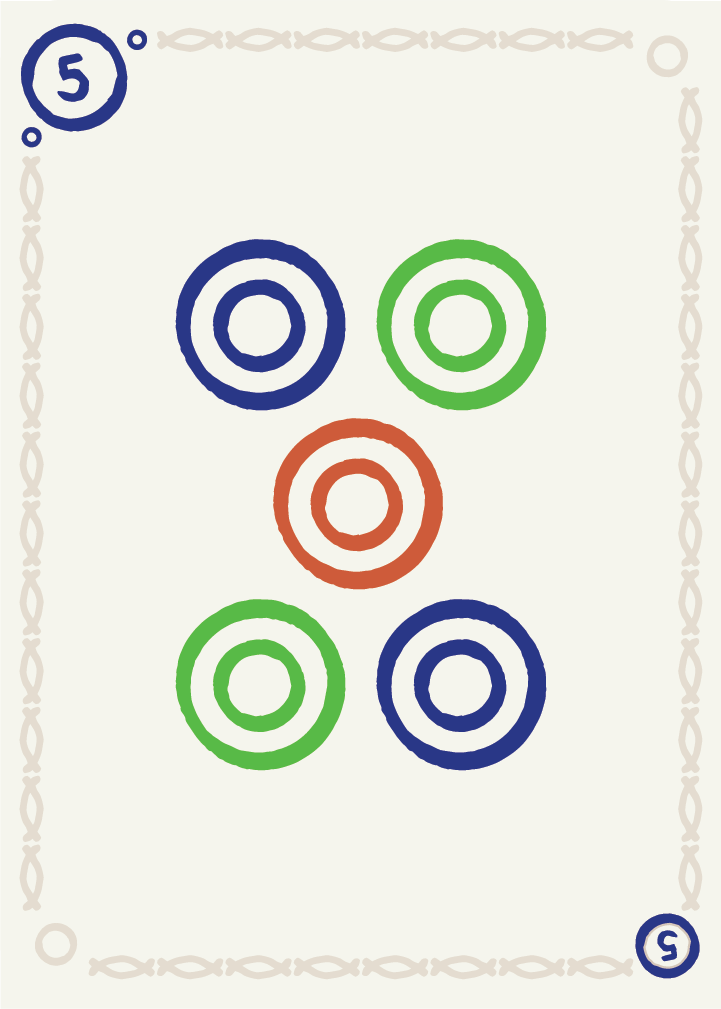

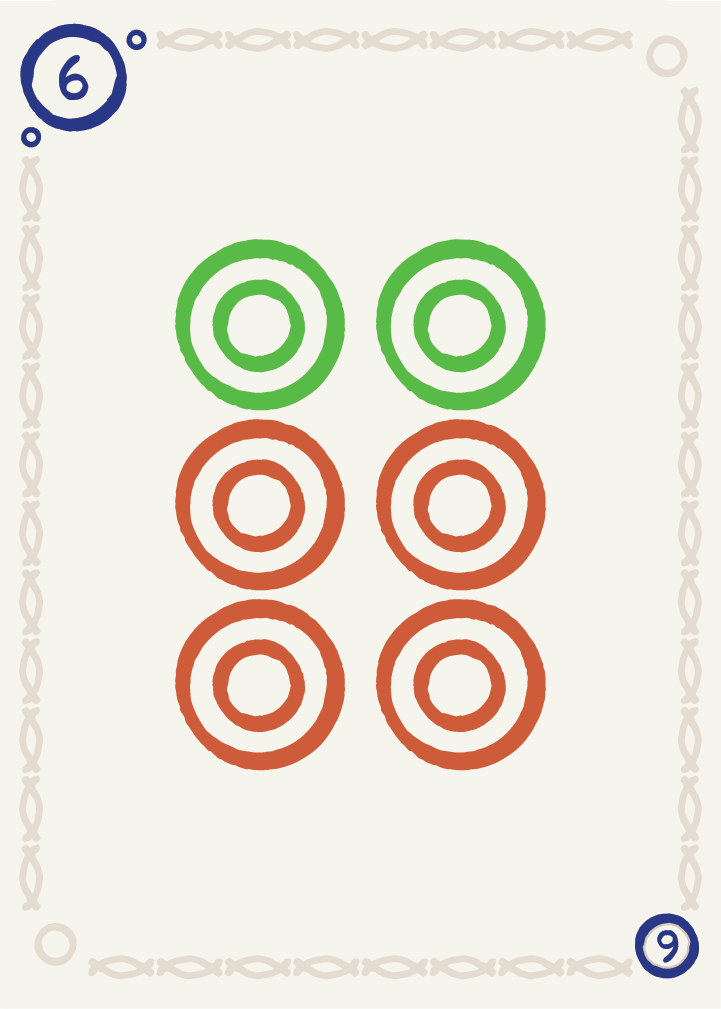



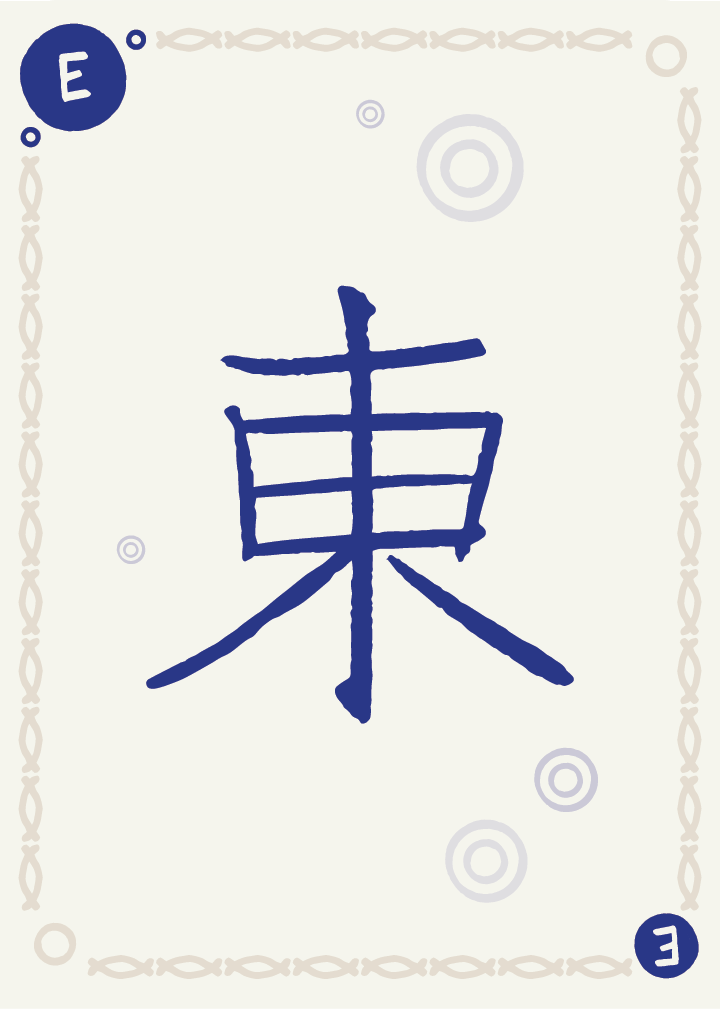
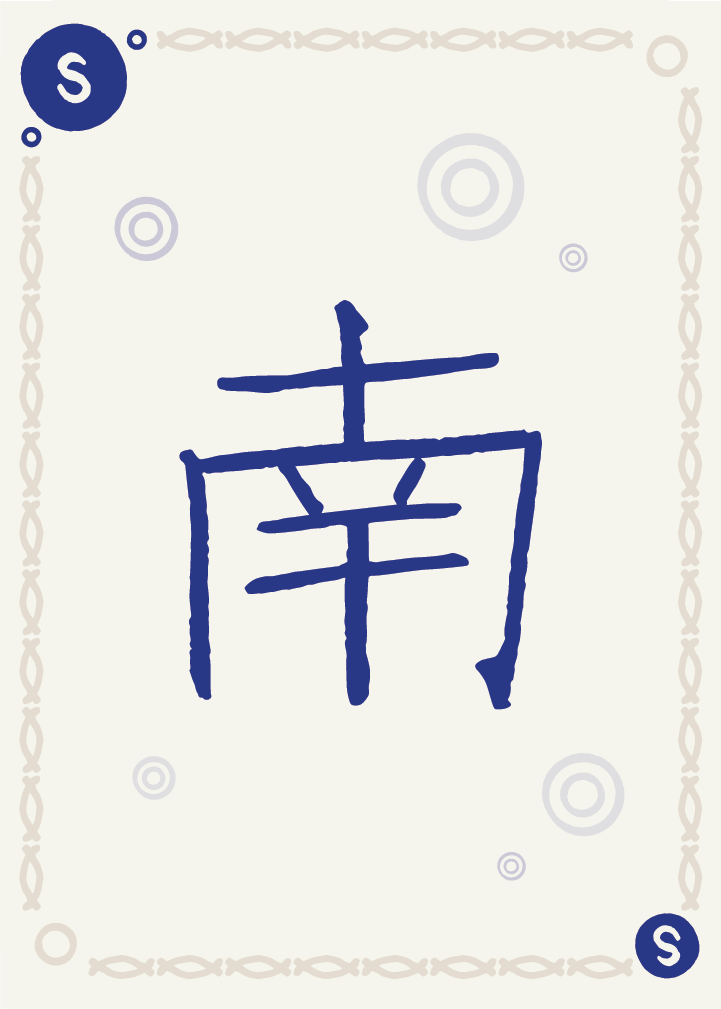


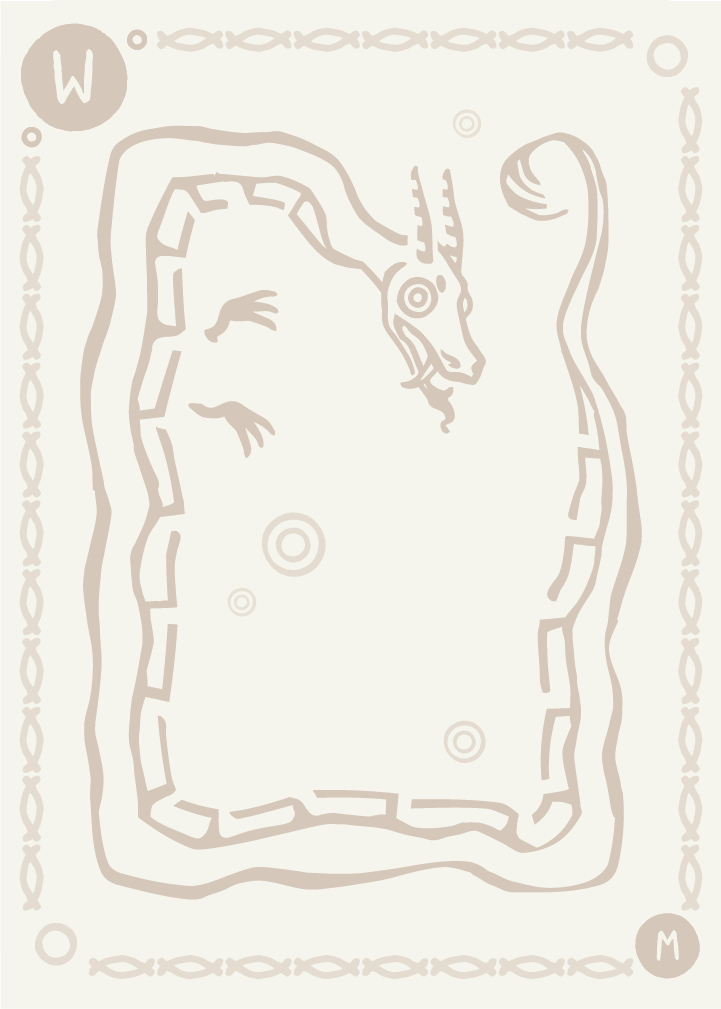

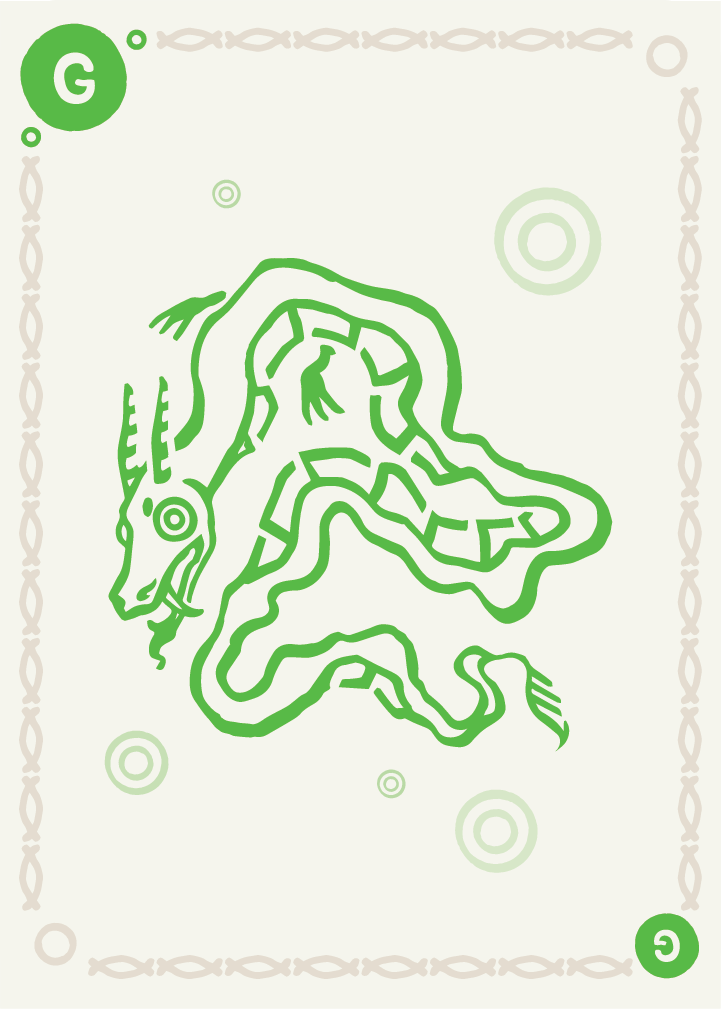
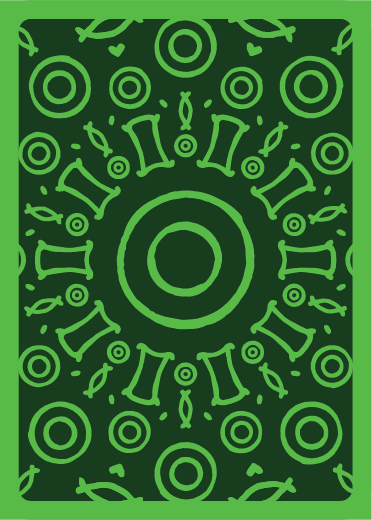
Process
Each tile went through multiple iterations. Following are some notable tile's development.

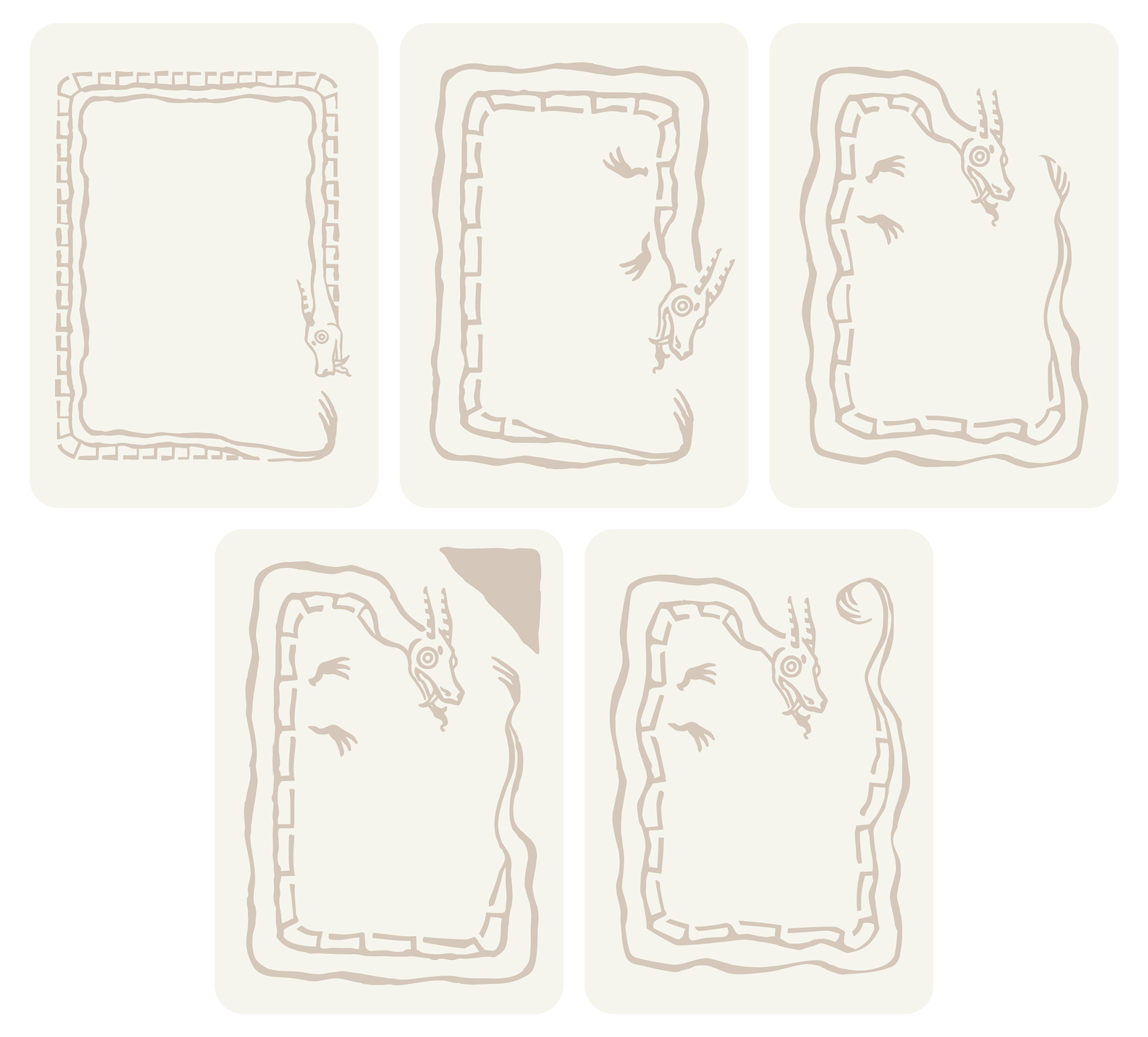

Board Prototyping
Prototypes 1 (white) and 2 (orange and pink). These early stage prototypes developed major elements for the final product, including the opening mechanism, fold, and layering.
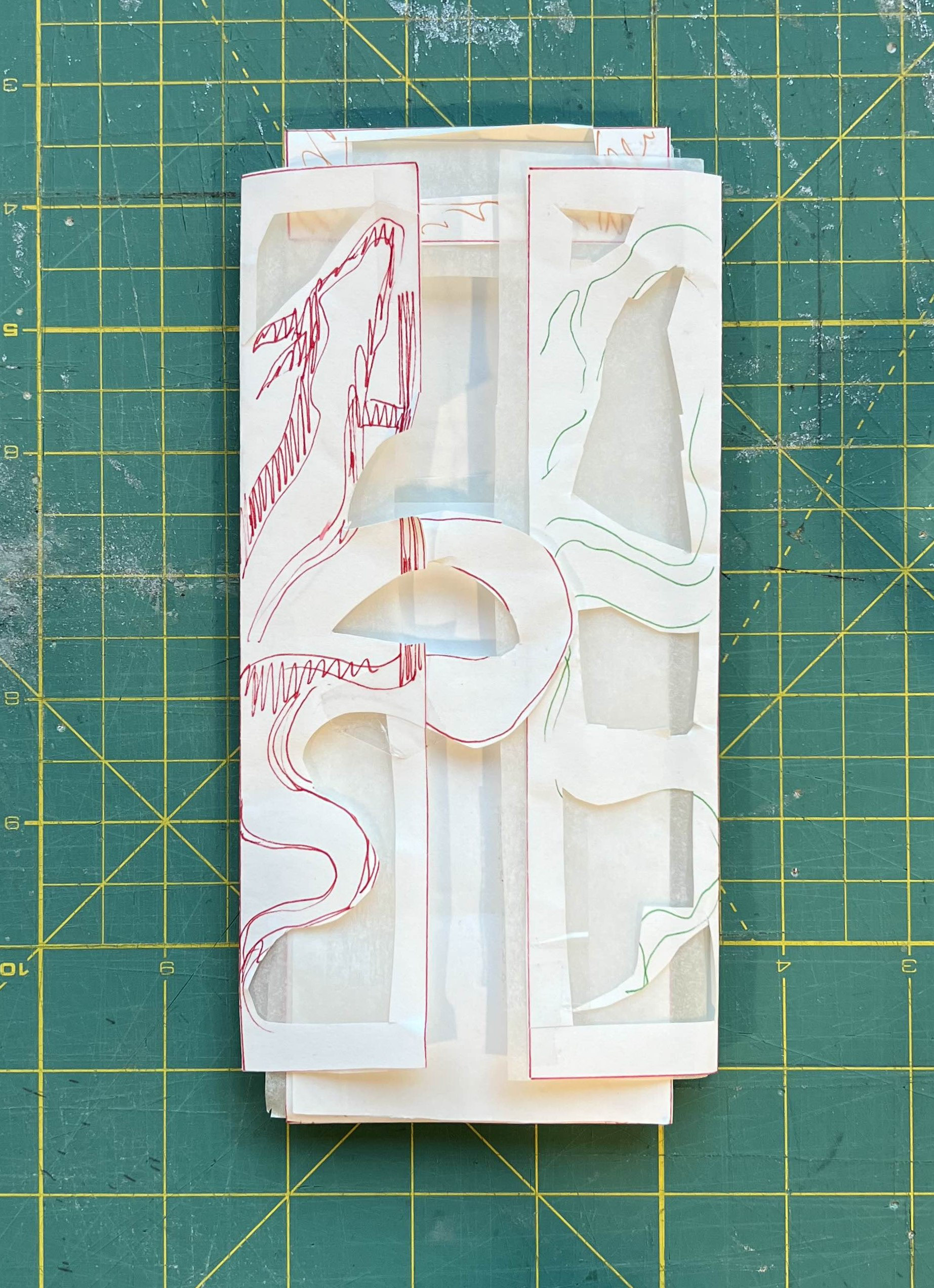
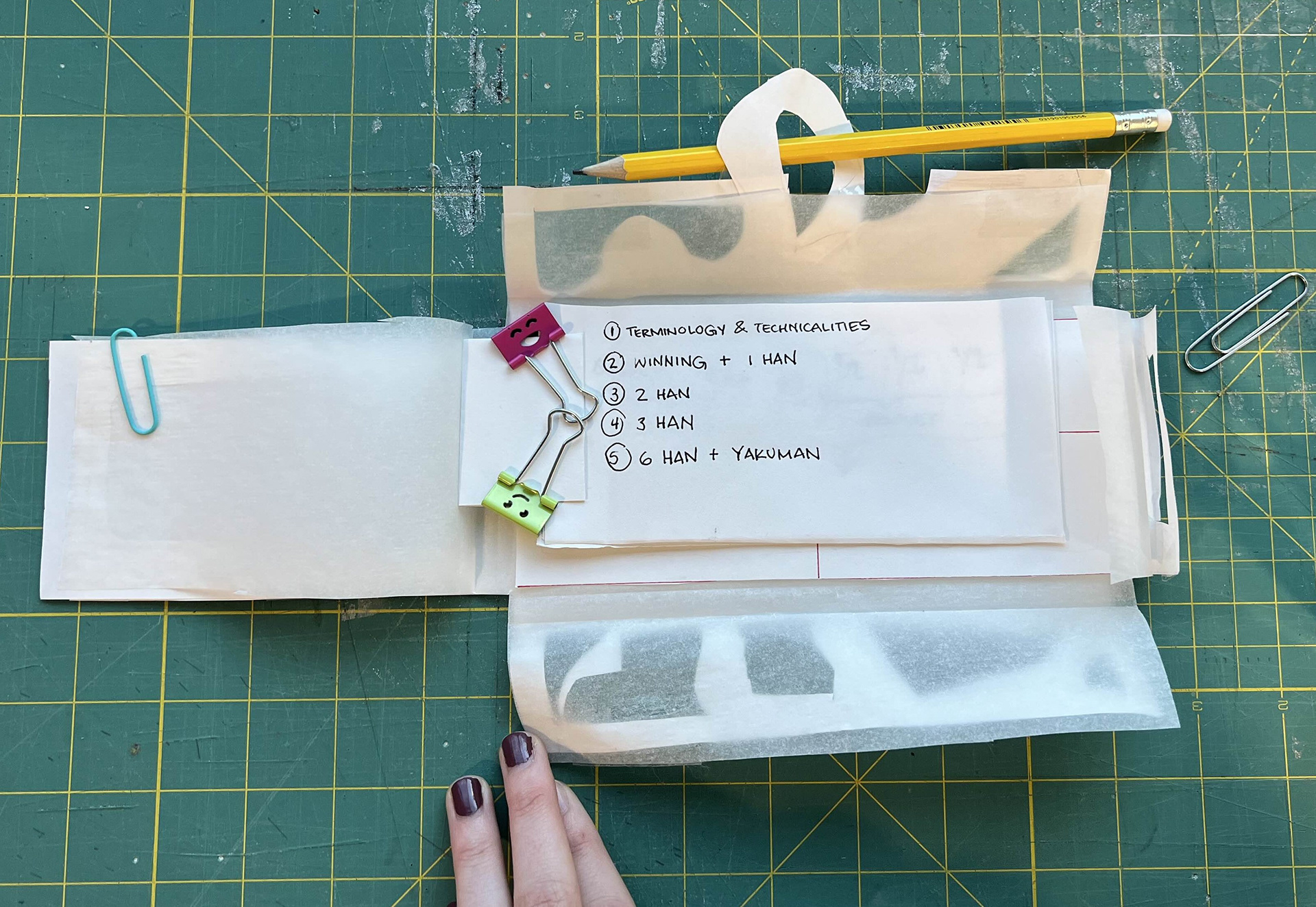
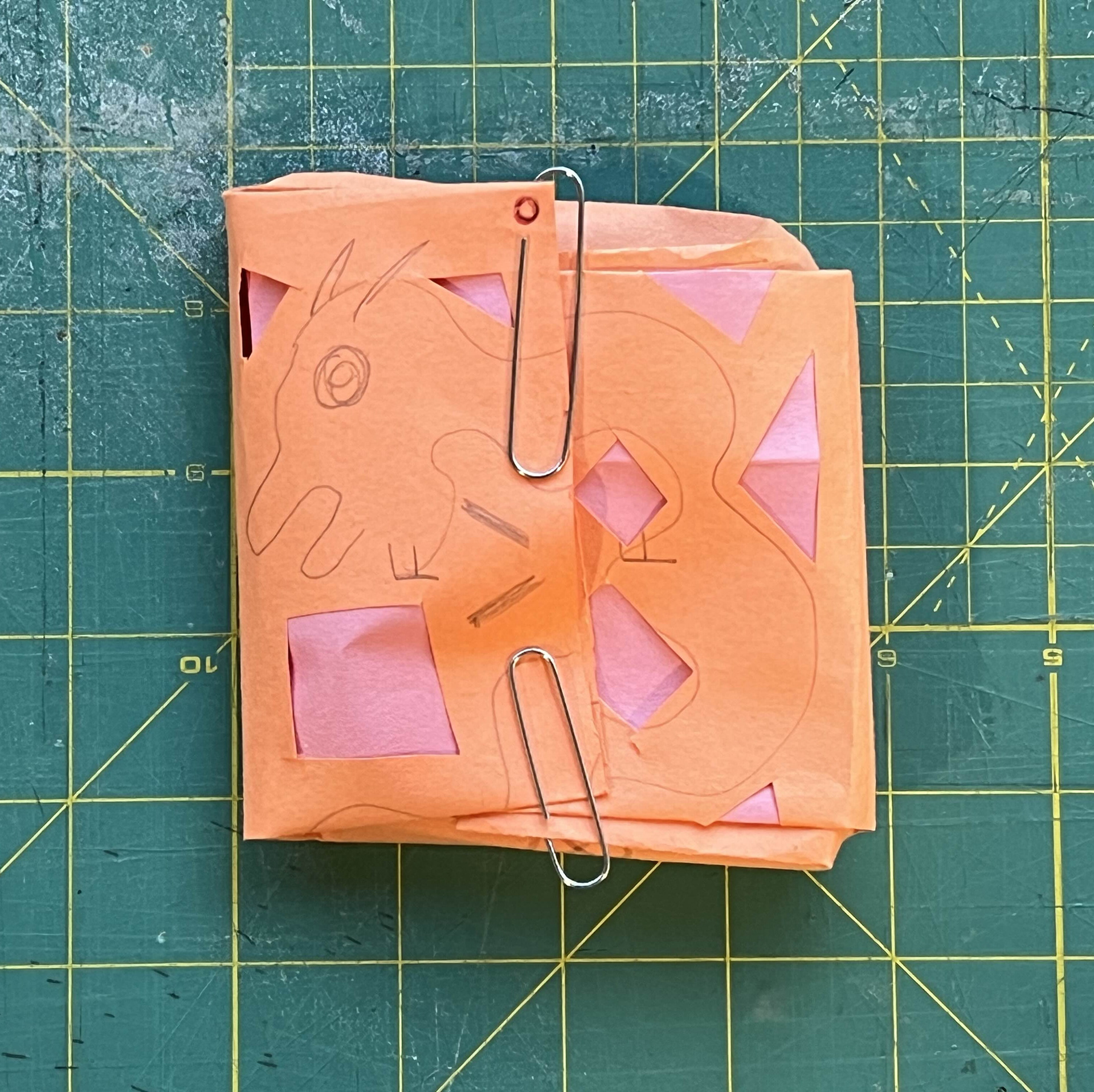
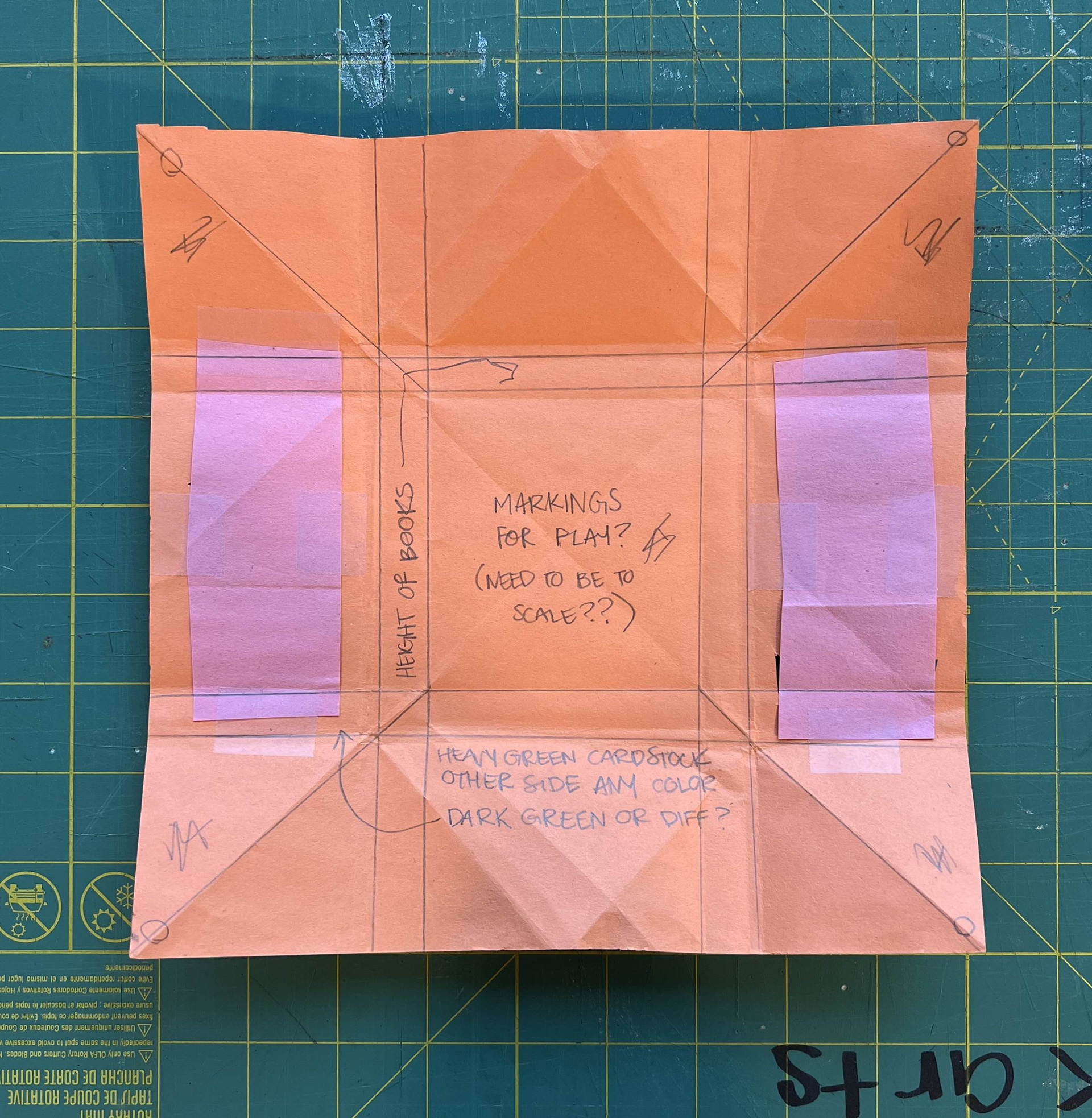
Prototypes 3 (black, yellow, and brown) and 4 (green). Prototype 3 acted as the gravity test, to test whether it was possible for the game board to open without a person holding down the corners, as well as to perfect the fold. Prototype 4 cleaned up the fold, and added on the flap present in later versions.
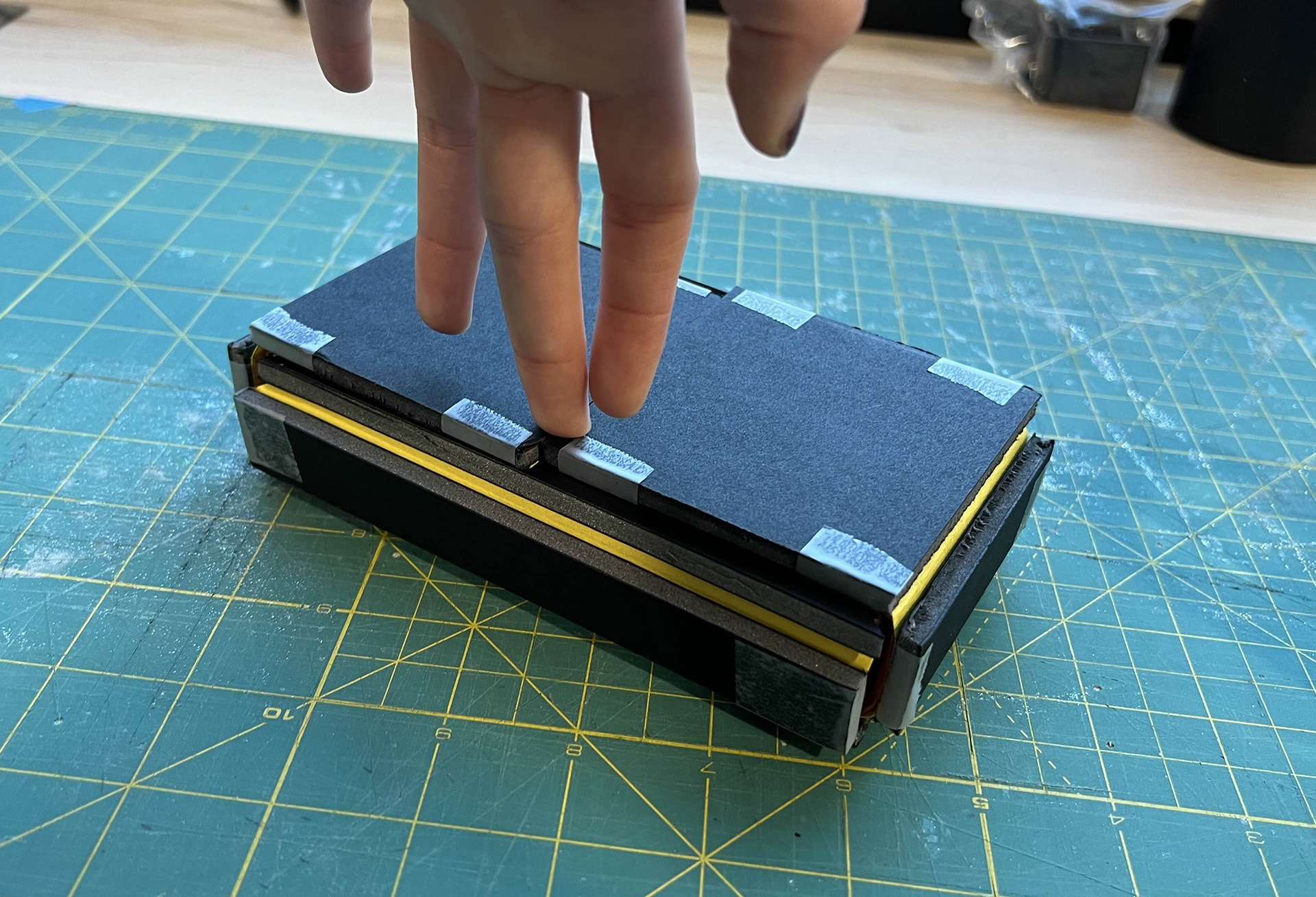

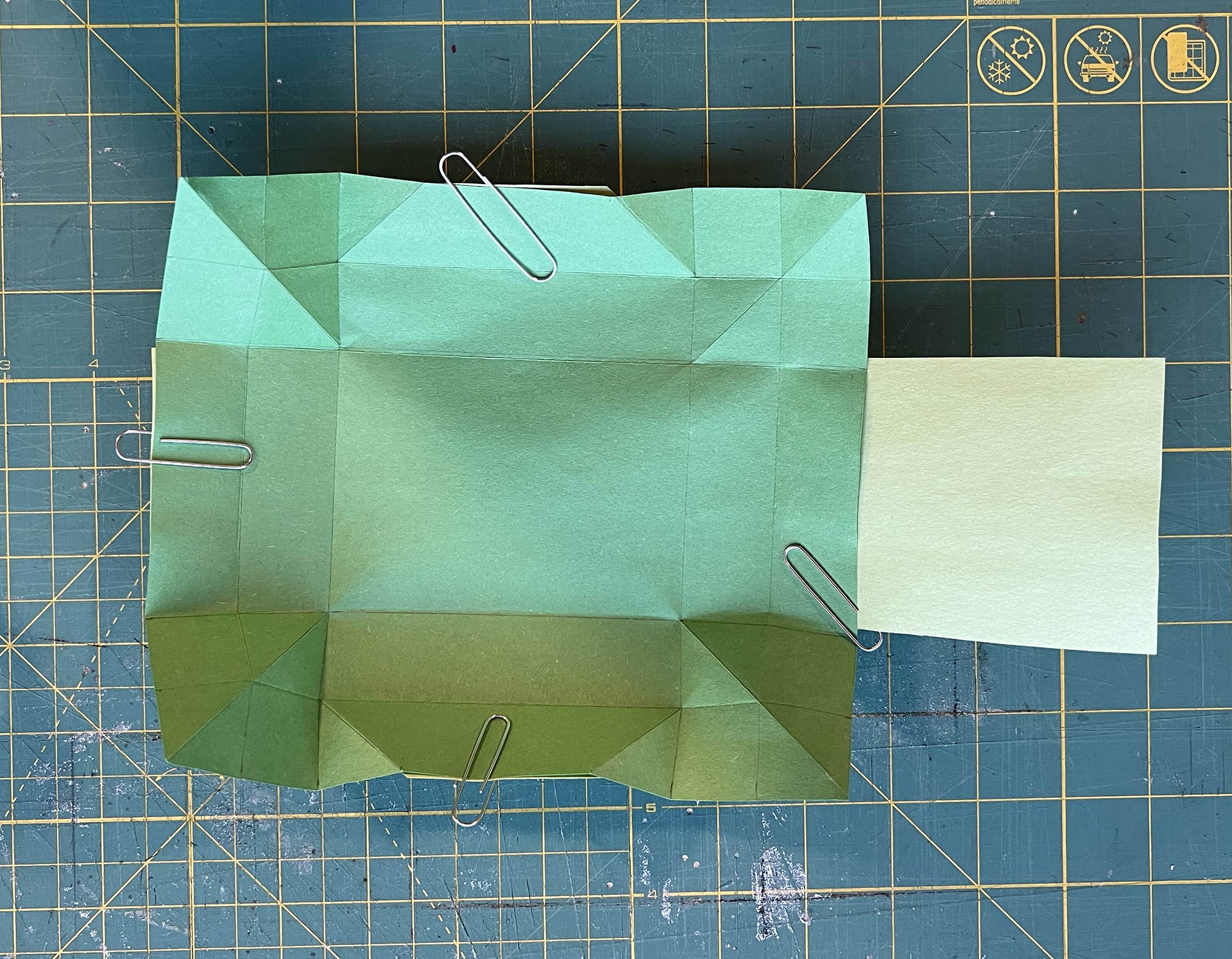
Prototype 5 (purple and blue). This prototype was the first full scale model. During production, it was learned that the corners needed to be cut off for the board to properly fold. This also gave opportunities to view the game with placeholder cards, and play with board layouts.
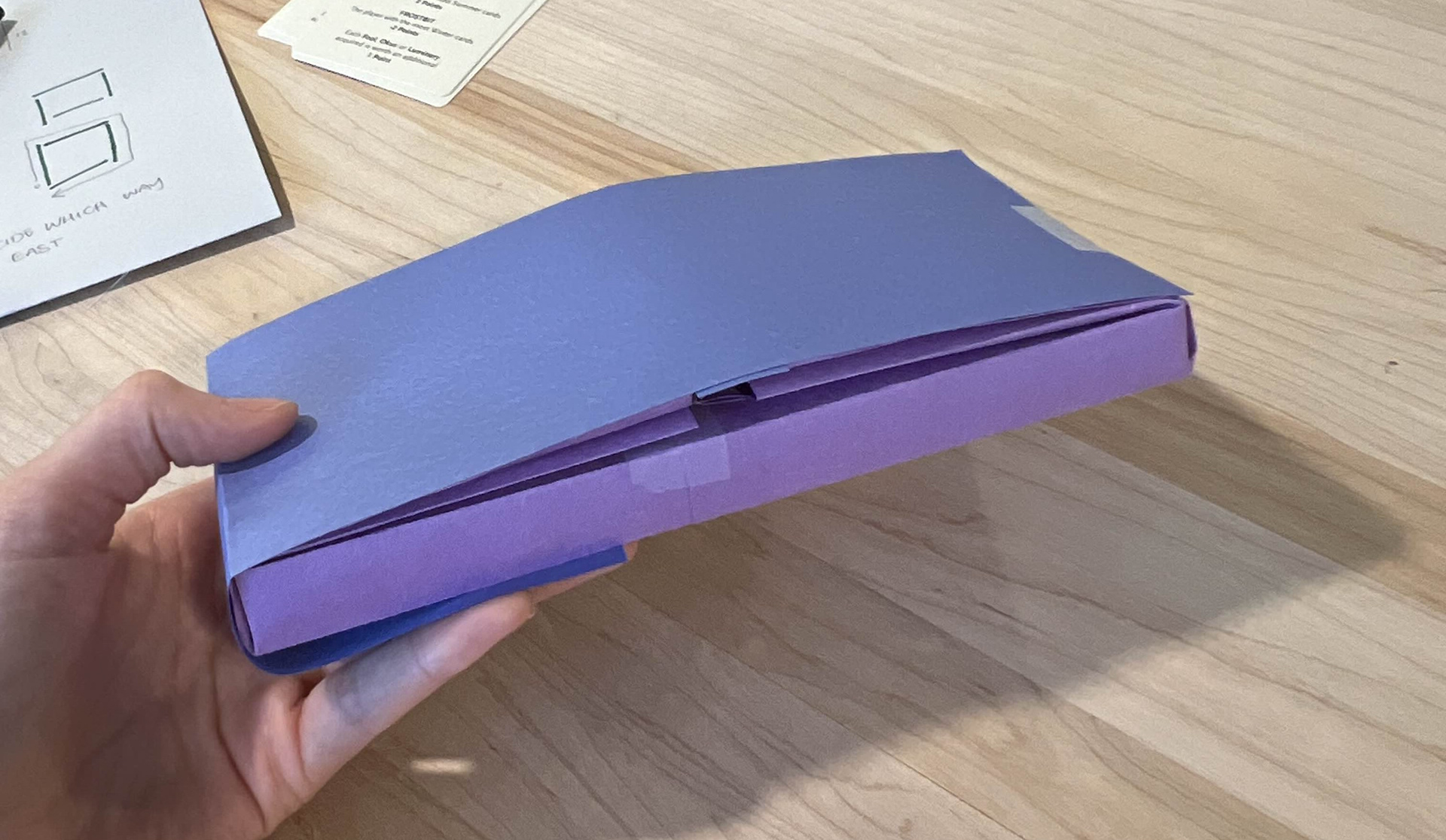
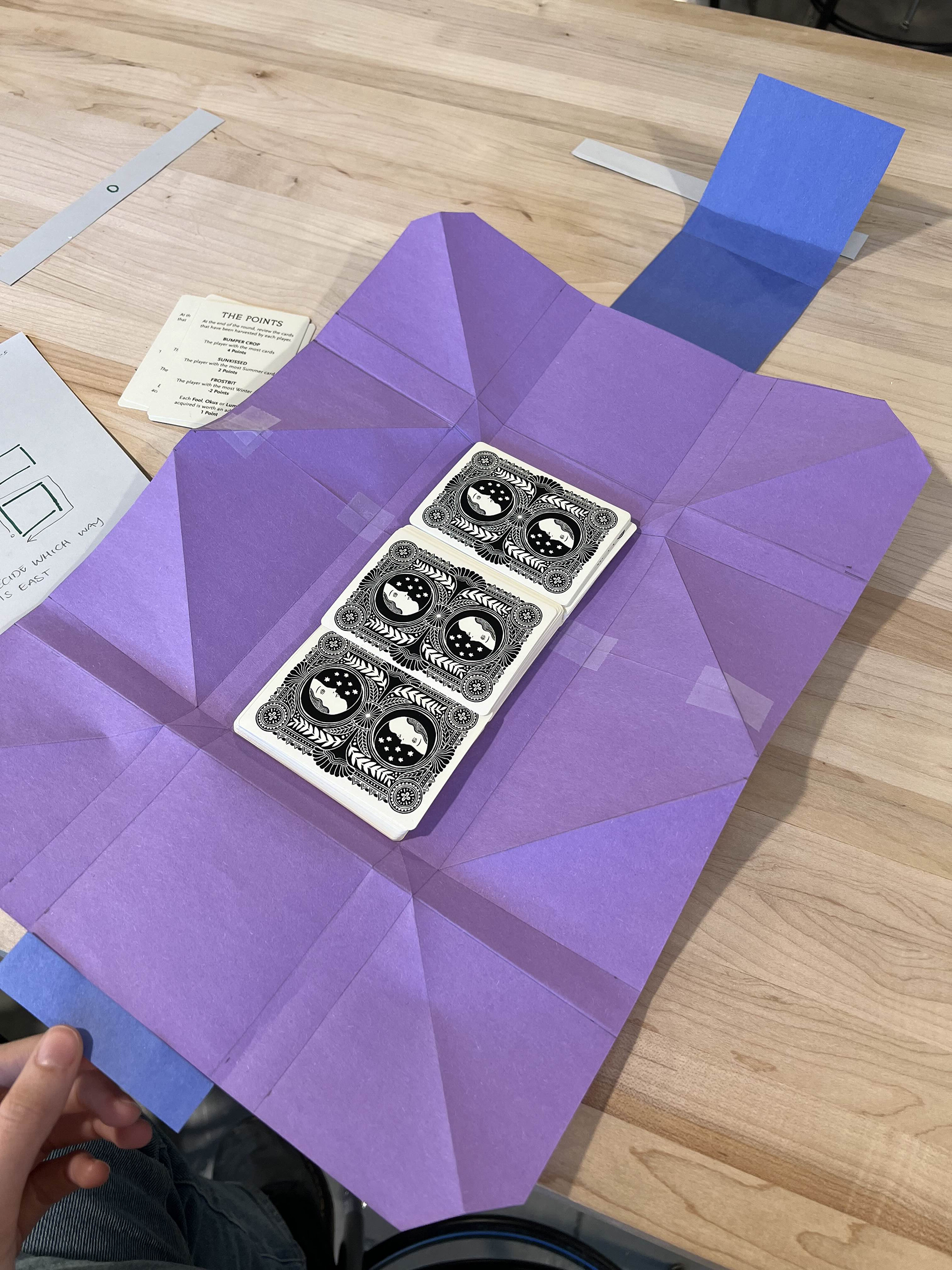
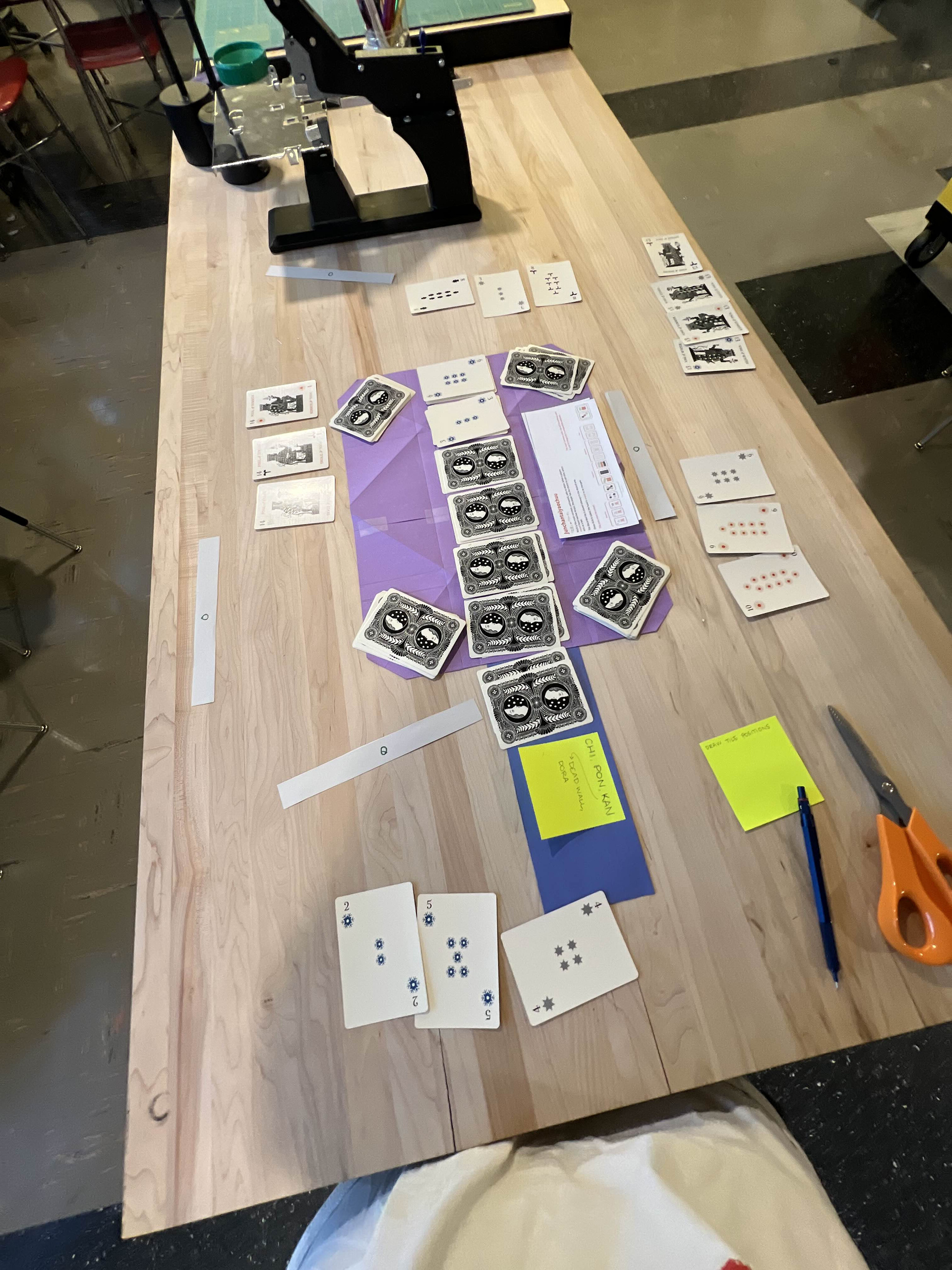
The final board differs from the others. The large board was ultimately removed, as the box was the only board that was needed and actually being used.
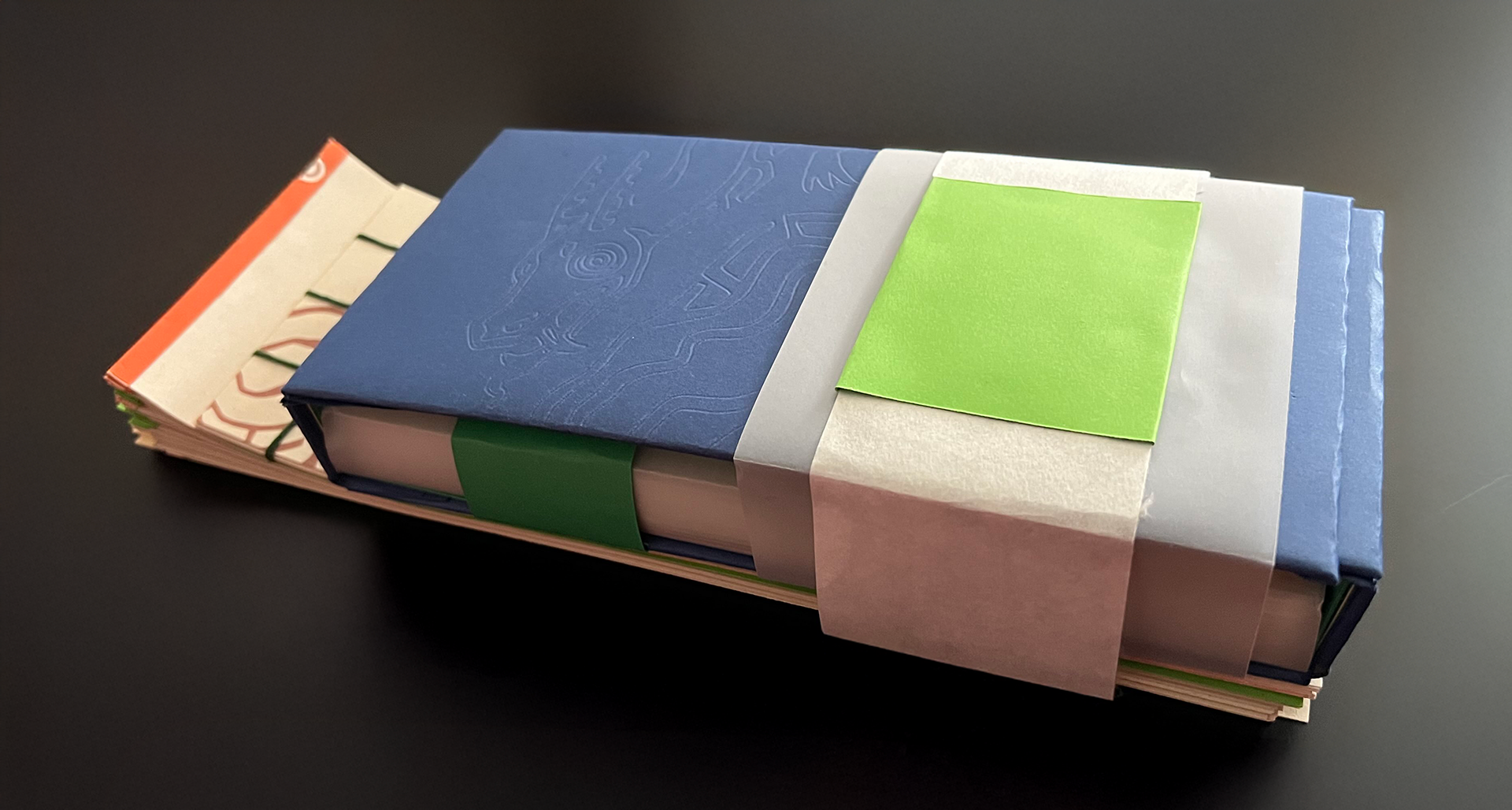

Instruction and Terminology
The book comes with two sections: instructions and terminology. This book was simplified for beginner players. The instruction section is labeled with red.



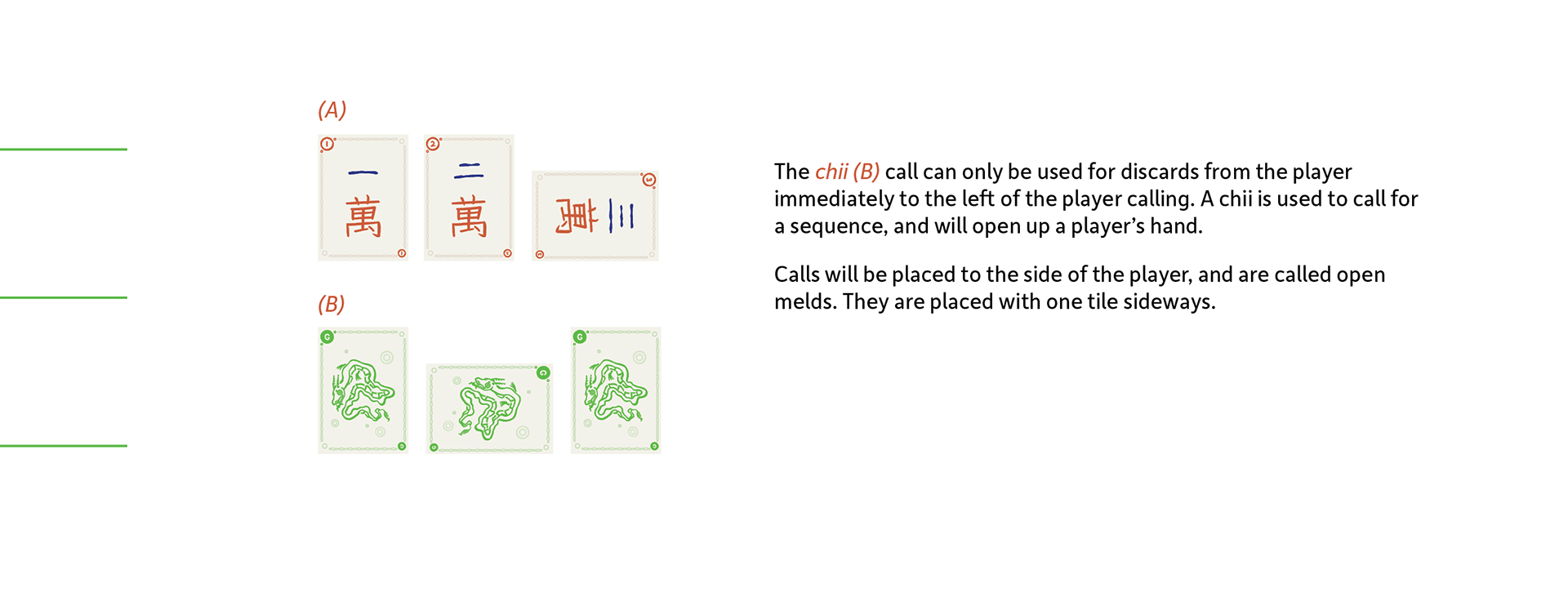
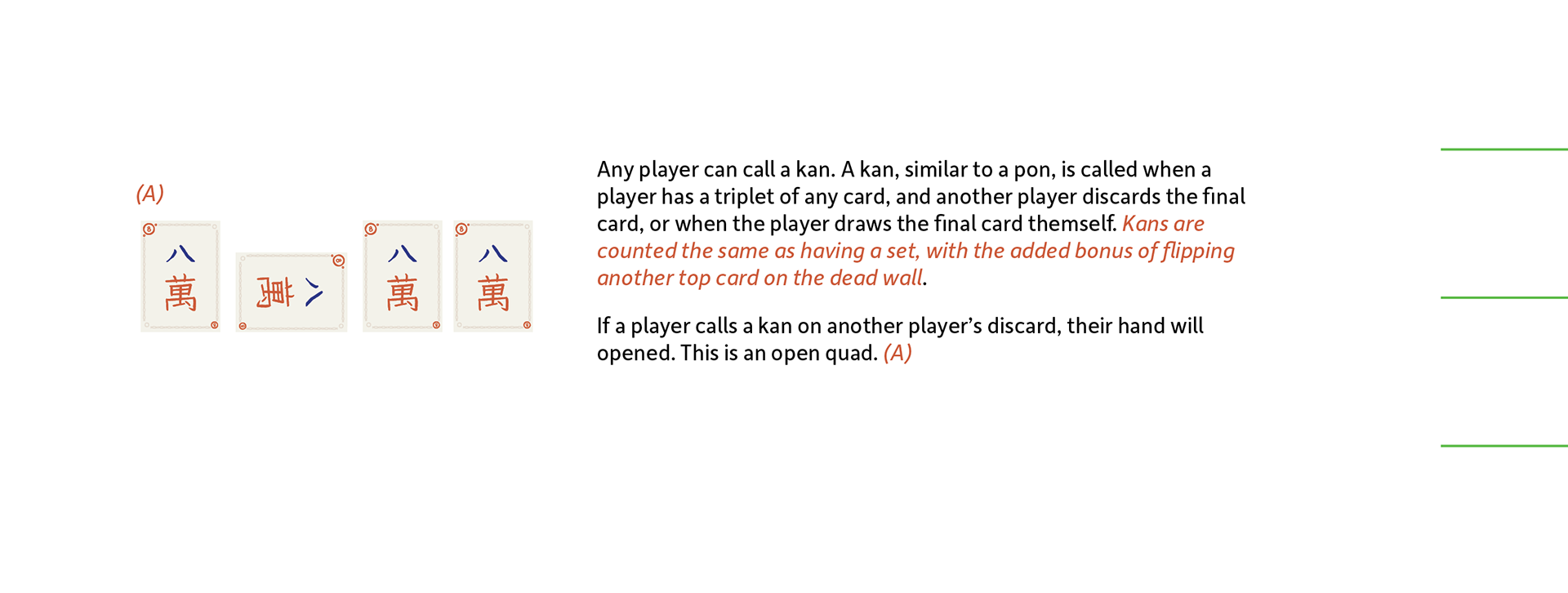

The terminology was broken up from the instructions with the use of a dark green, rather than red.





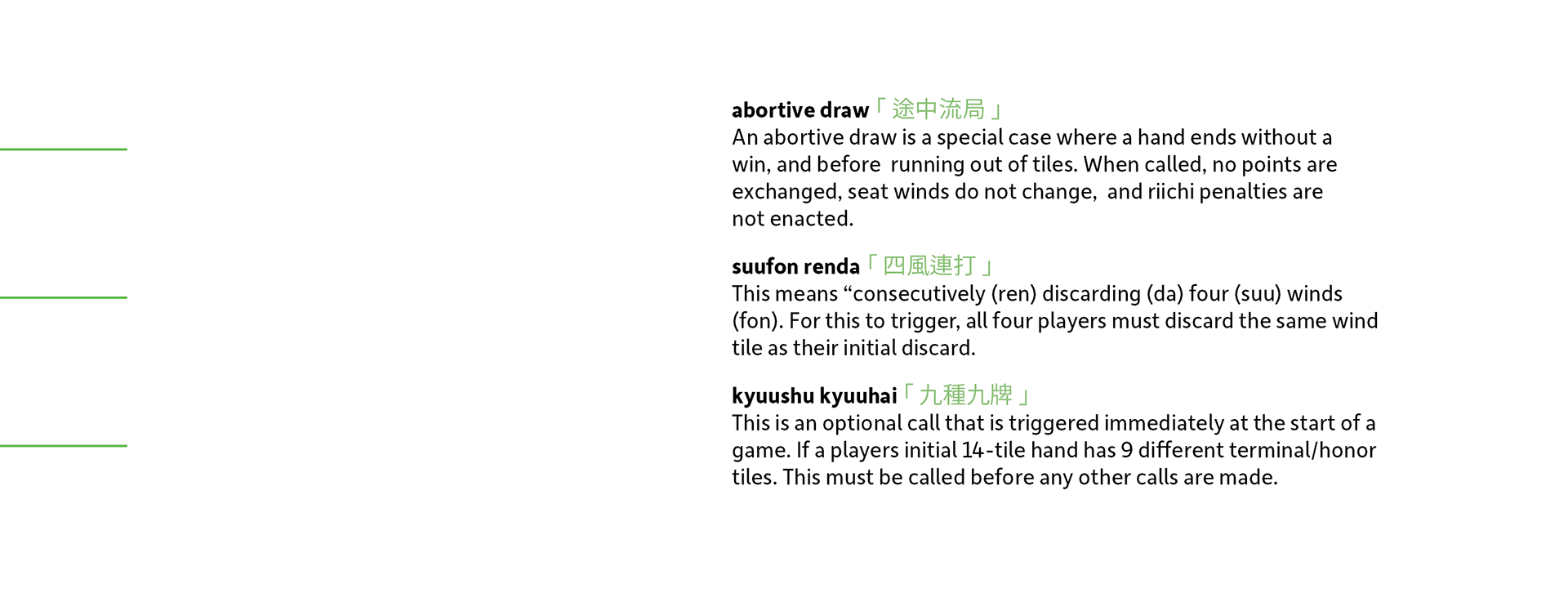
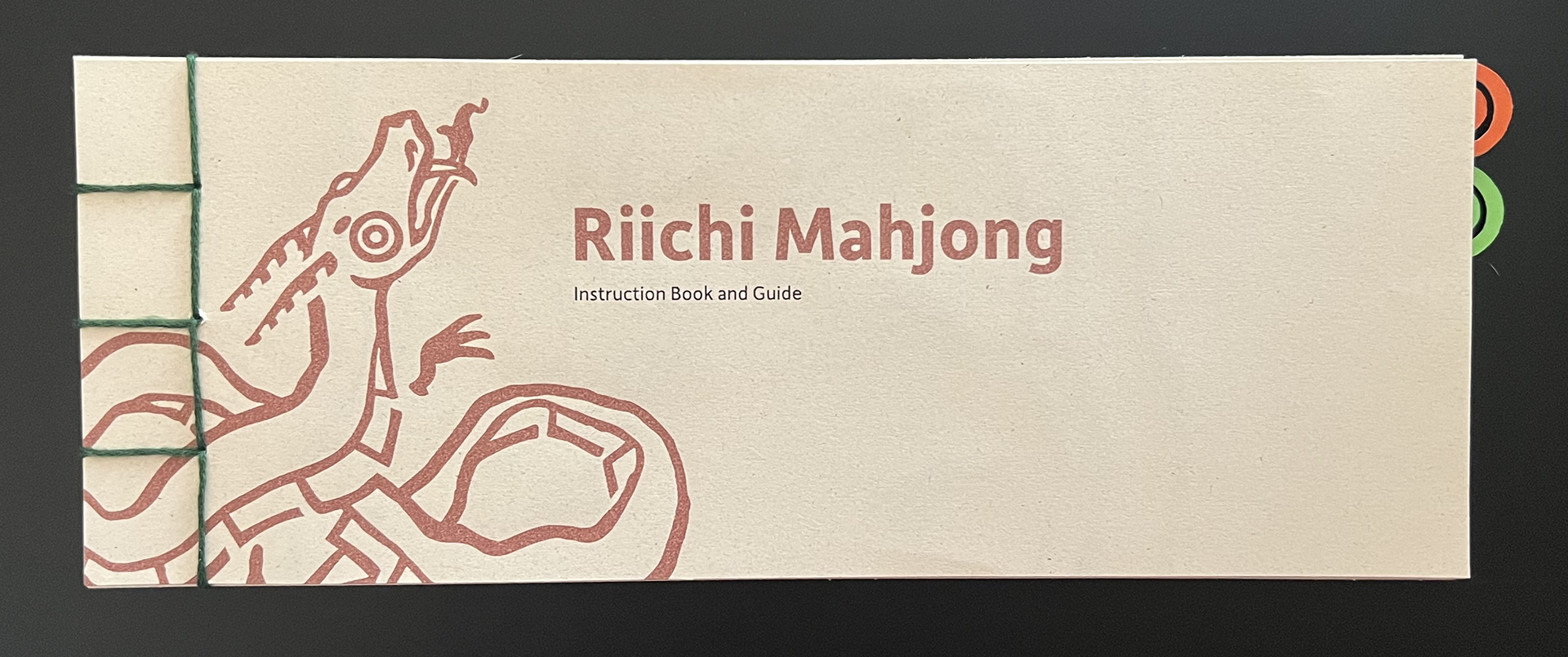

Yaku Cards
The yaku, otherwise known as win conditions, were made to be separate, to allow for more customization within groups. Players can easily remove common yaku, find information on their hand (including whether a hand is open or closed), as well as how many points the hand is worth by looking at the side of the card.
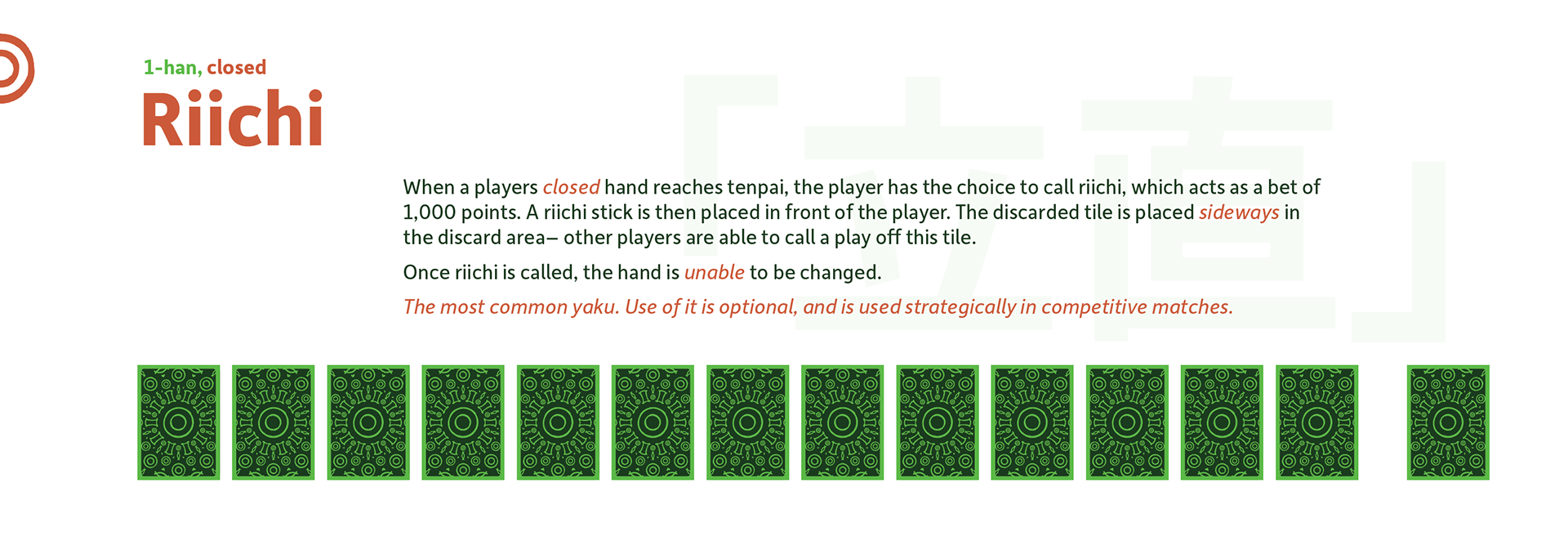

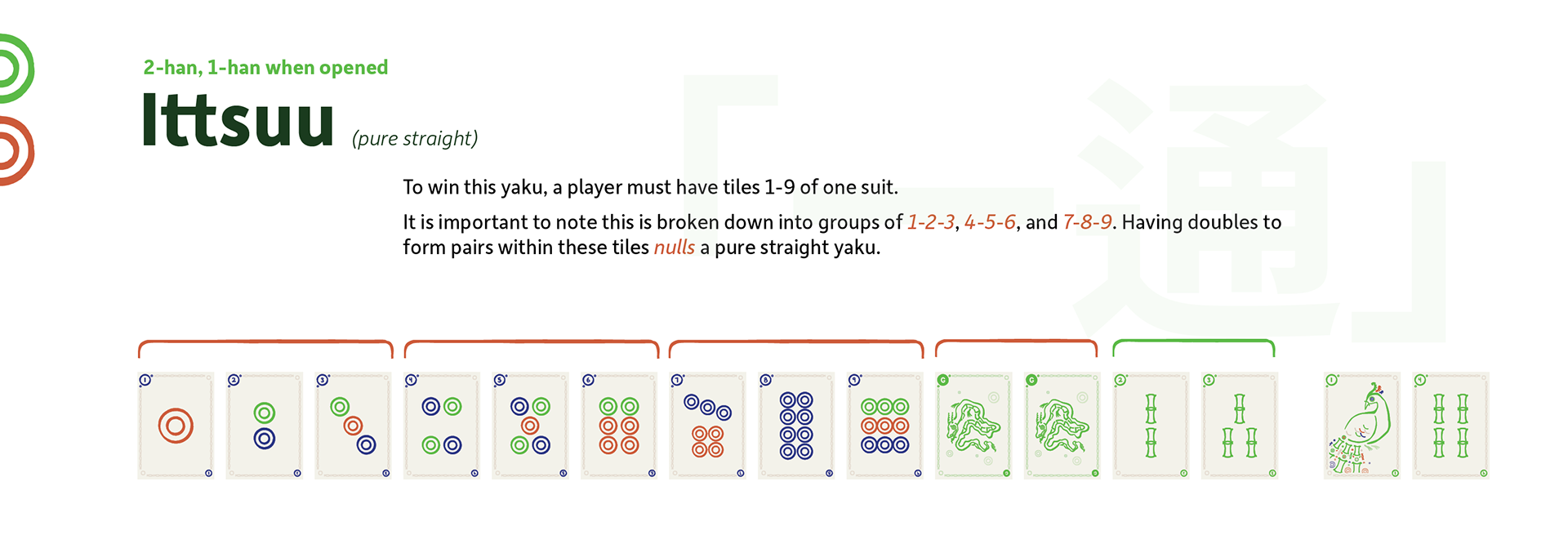
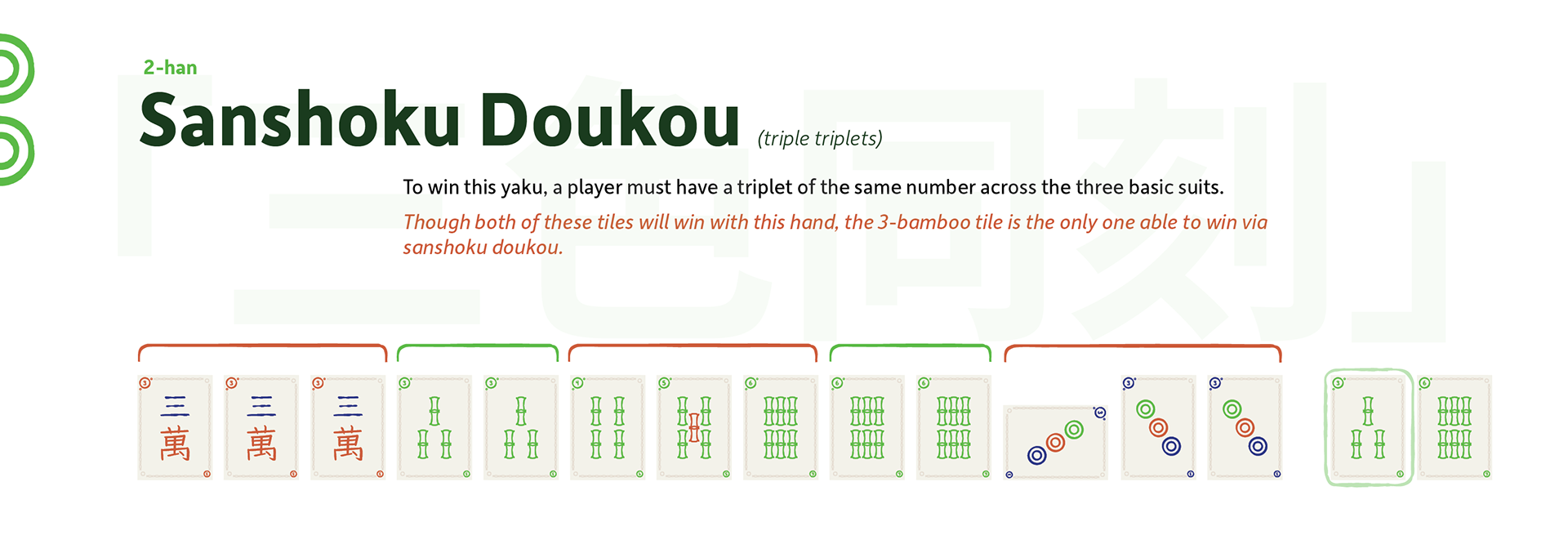
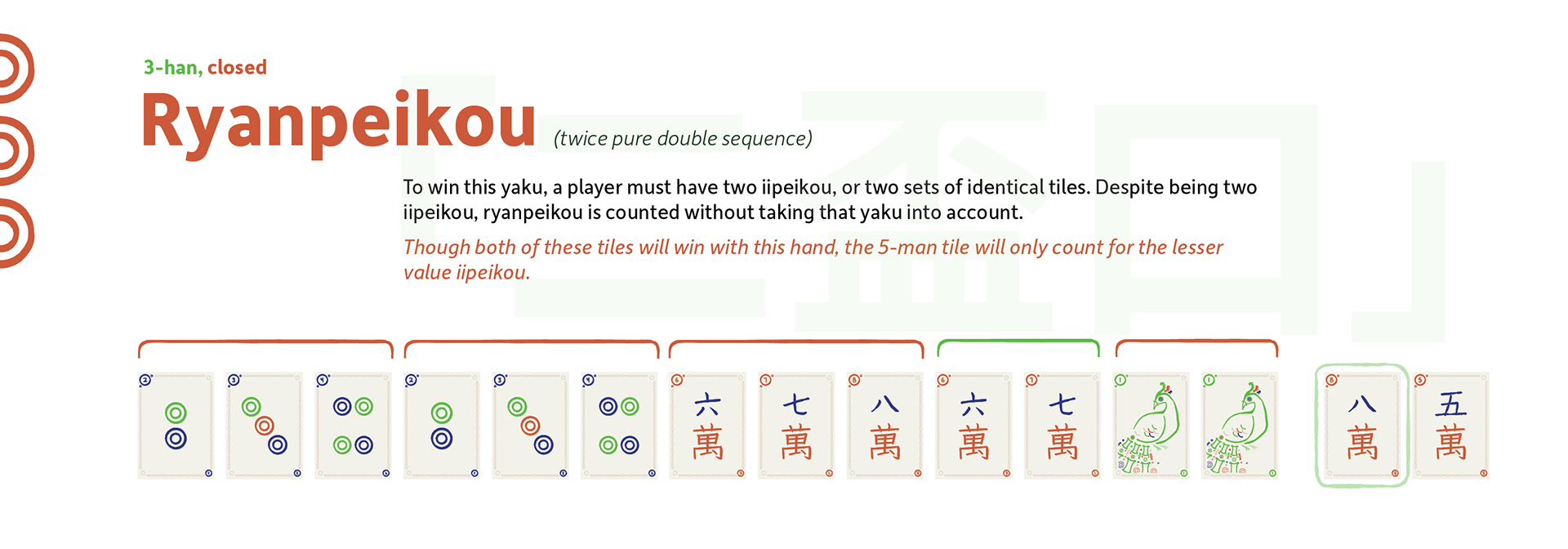
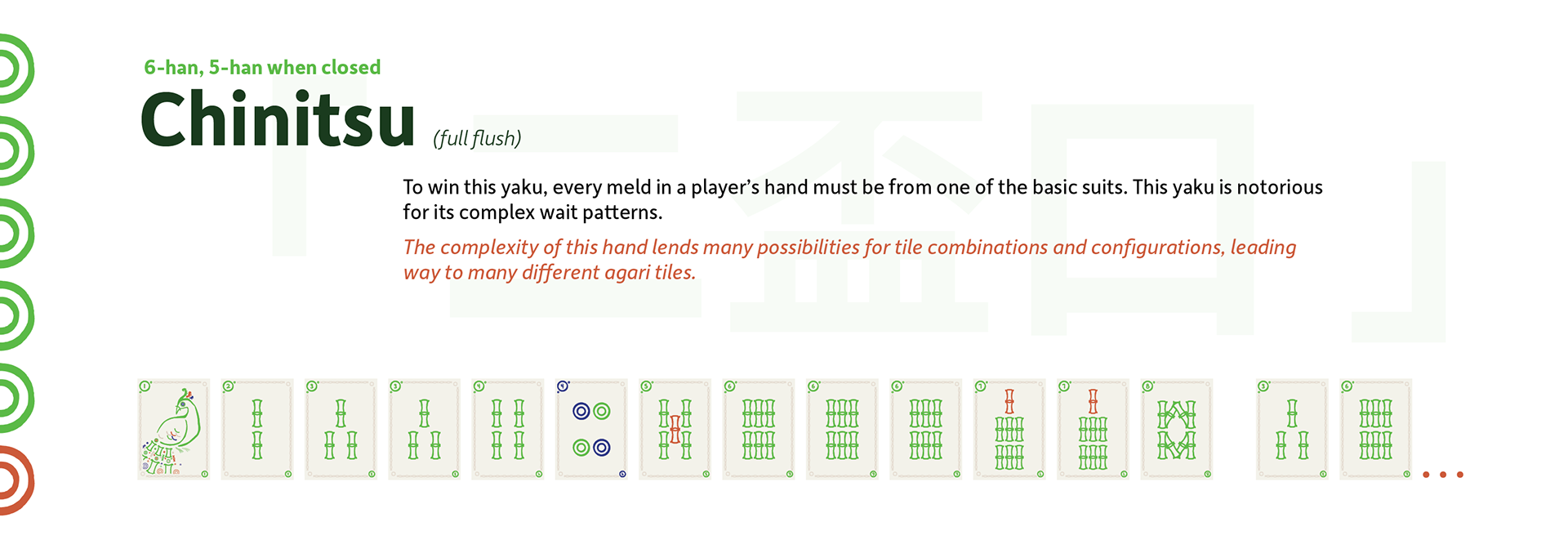
Each card has dots on the left side. The amount symbolize the amount of han (points) a hand is worth, and the color signifies whether a hand is open or closed. The exceptions to this are yakuman, a special case of yaku worth more than any other hand. These are symbolized with a physical white border and a collection of different colors on the left (with the outermost color symbolizing open or closed).



The borders of the cards were cut to allow for tactility, and ease of use.
